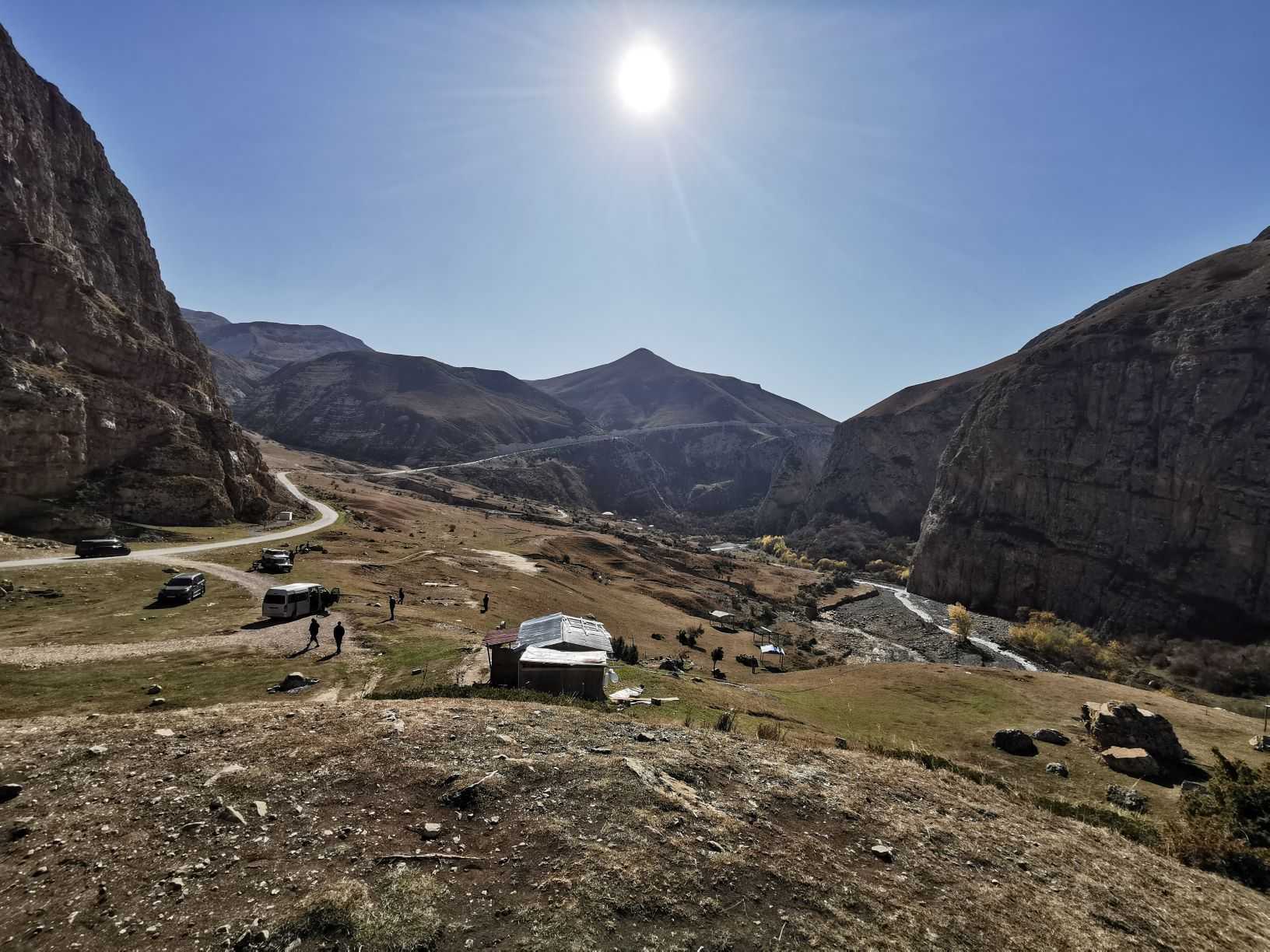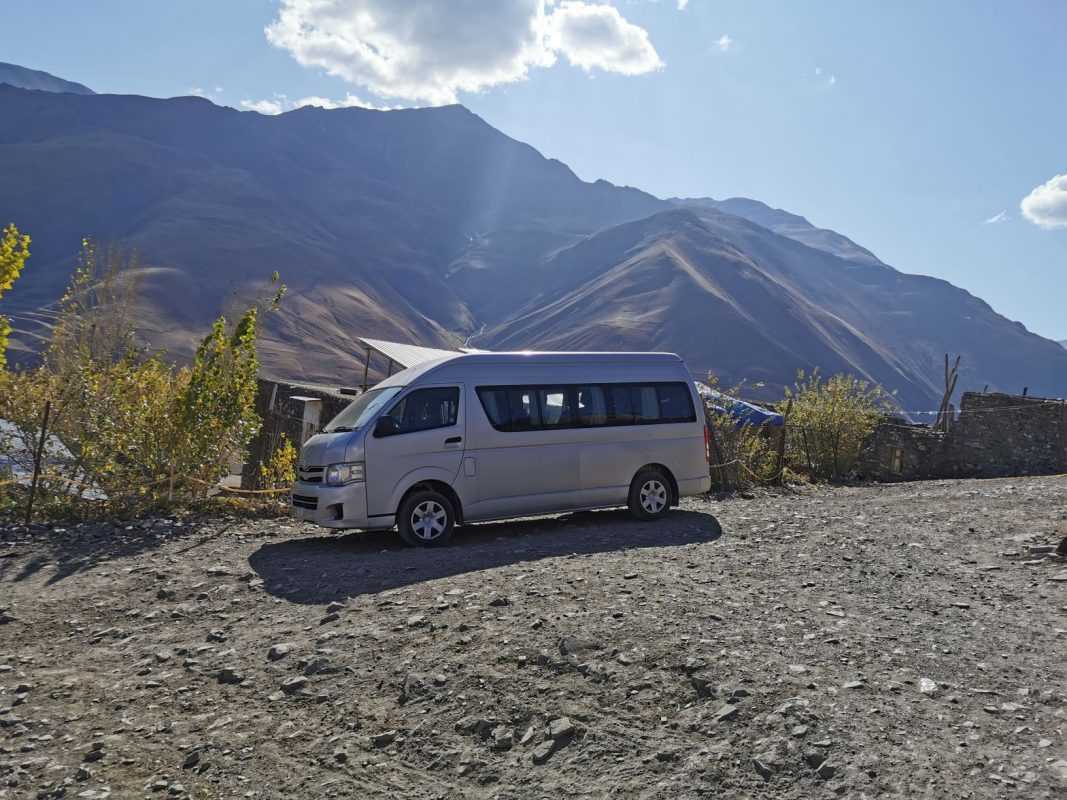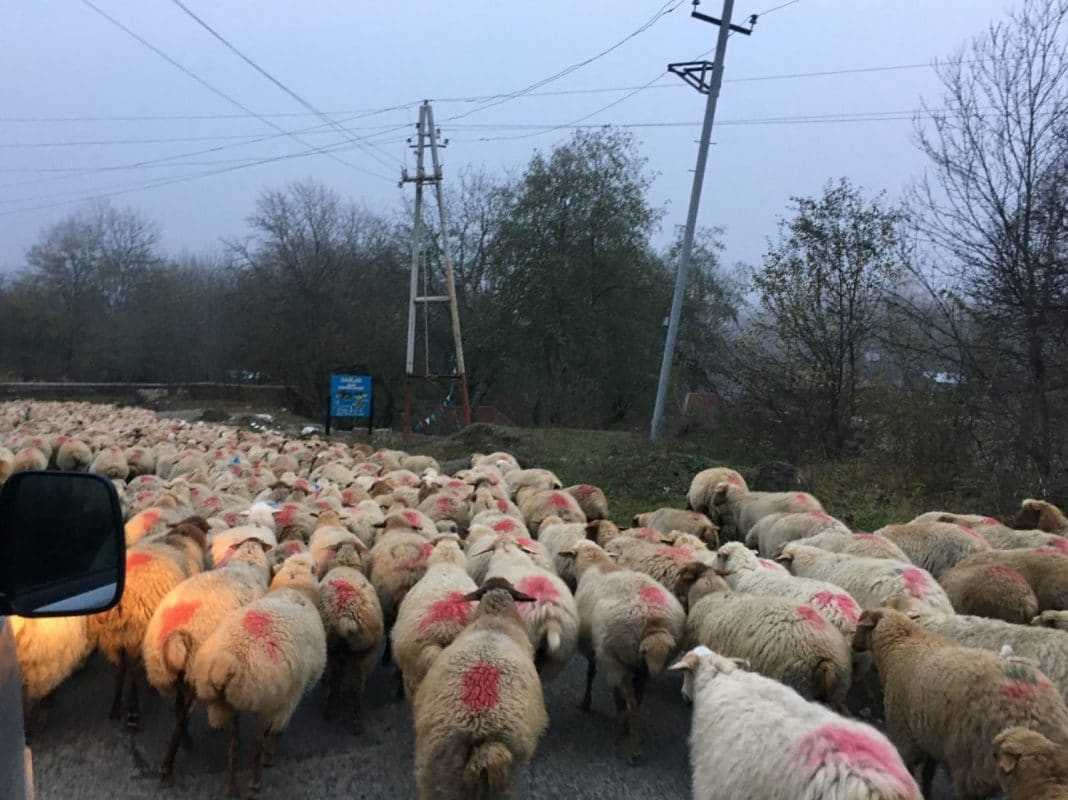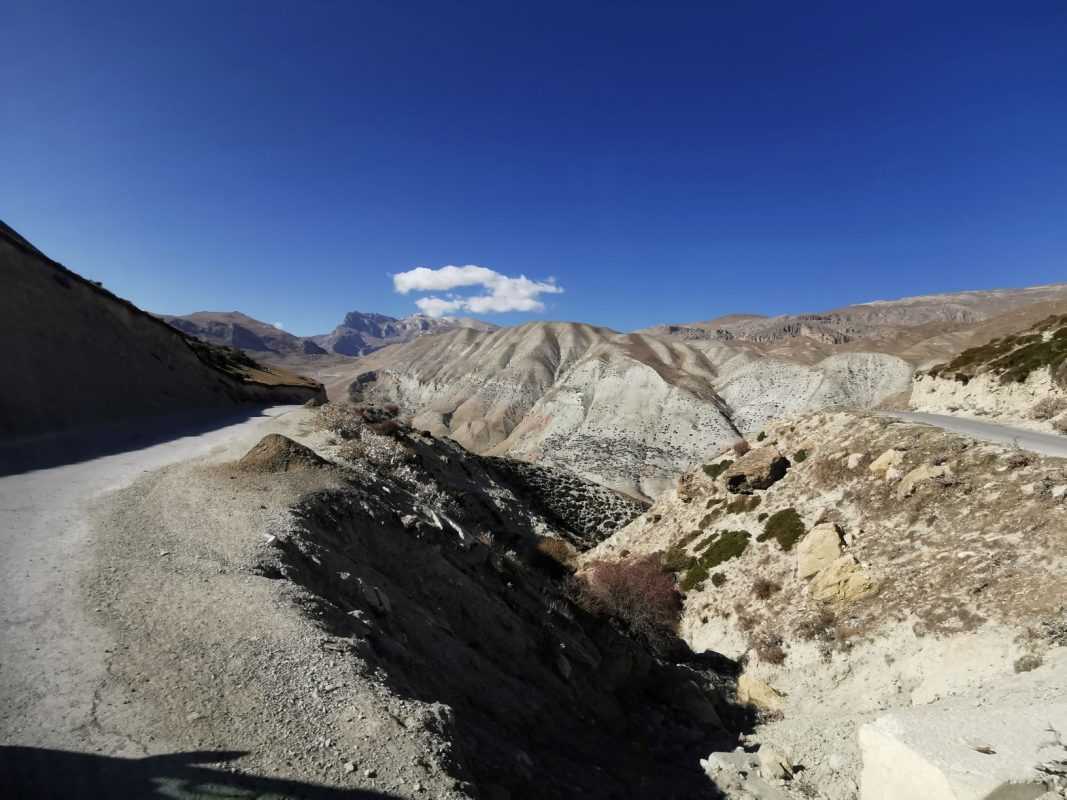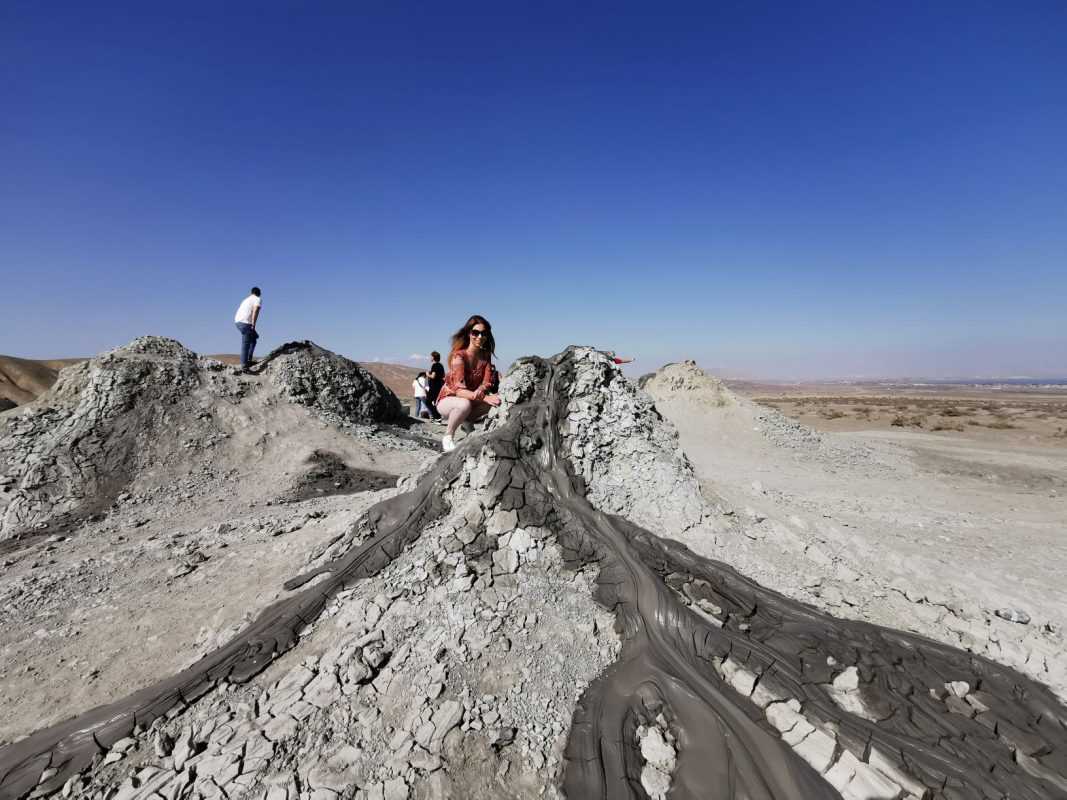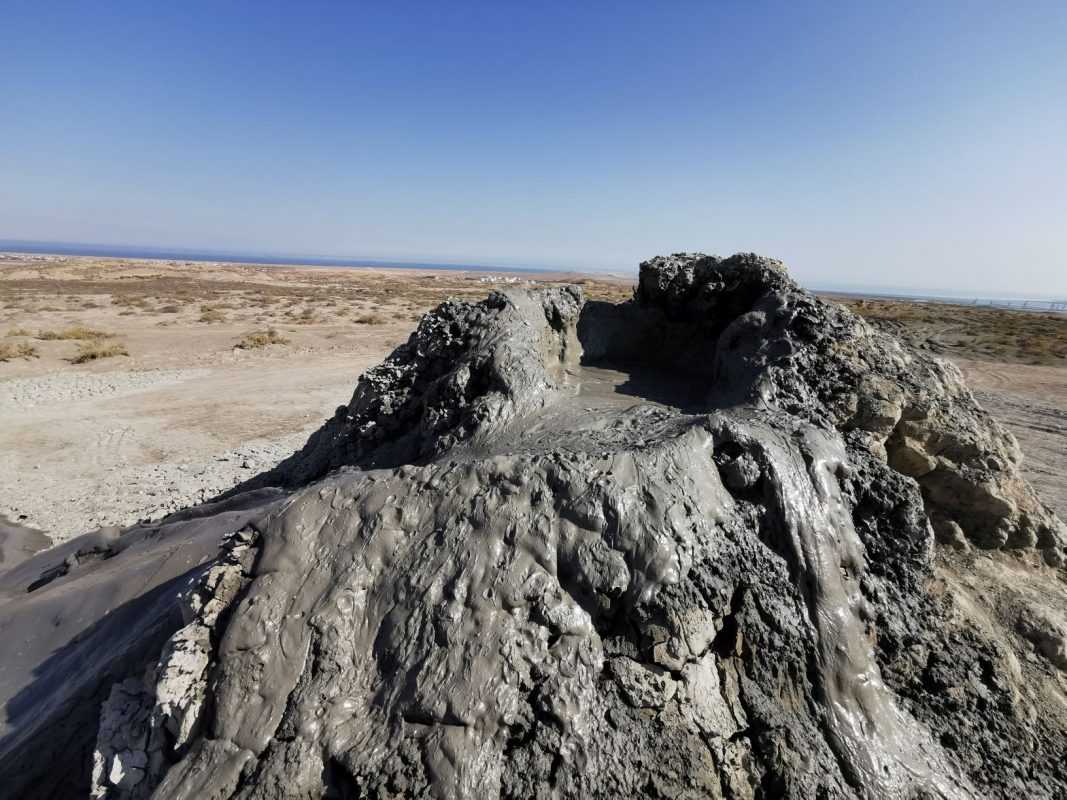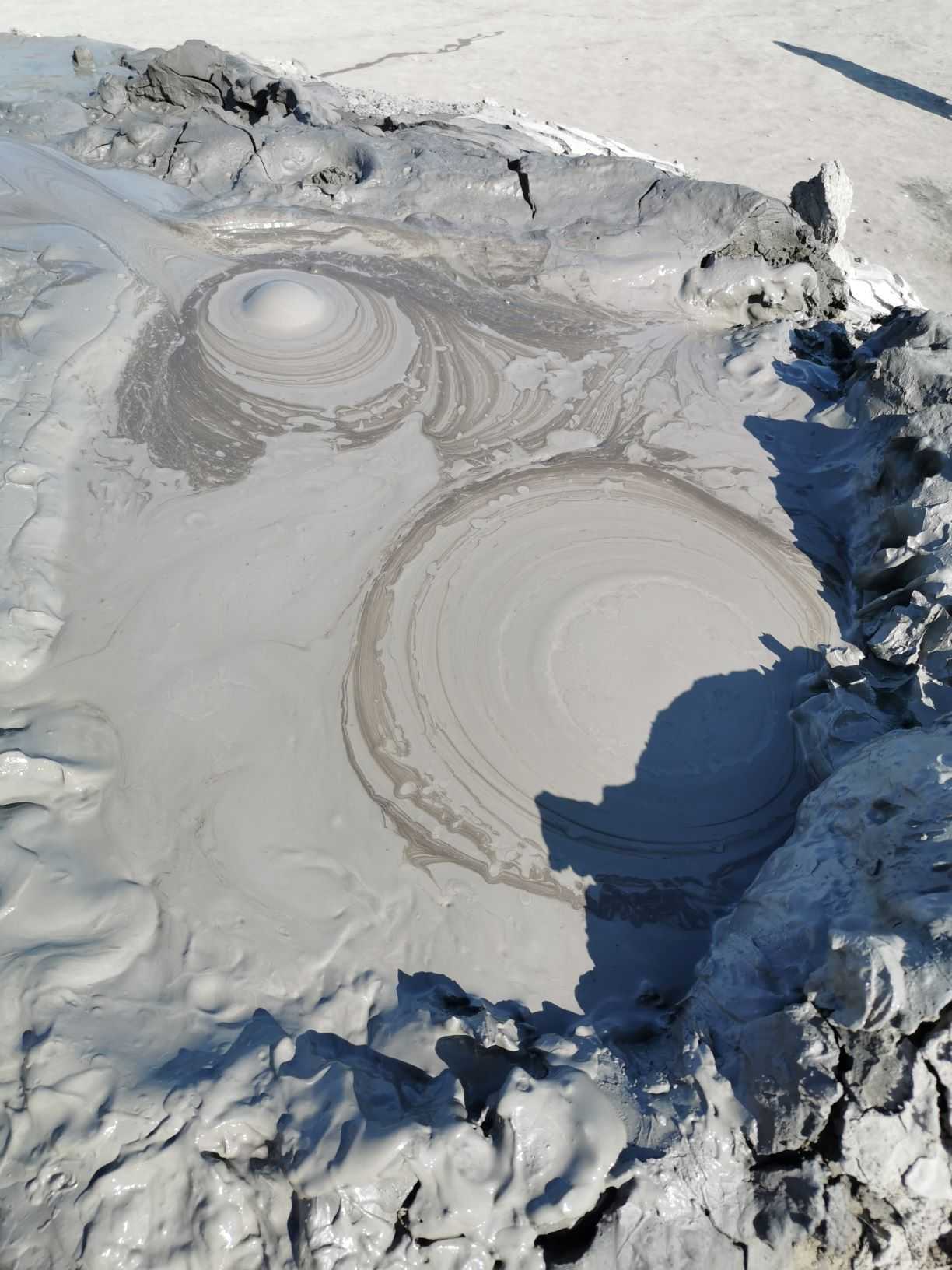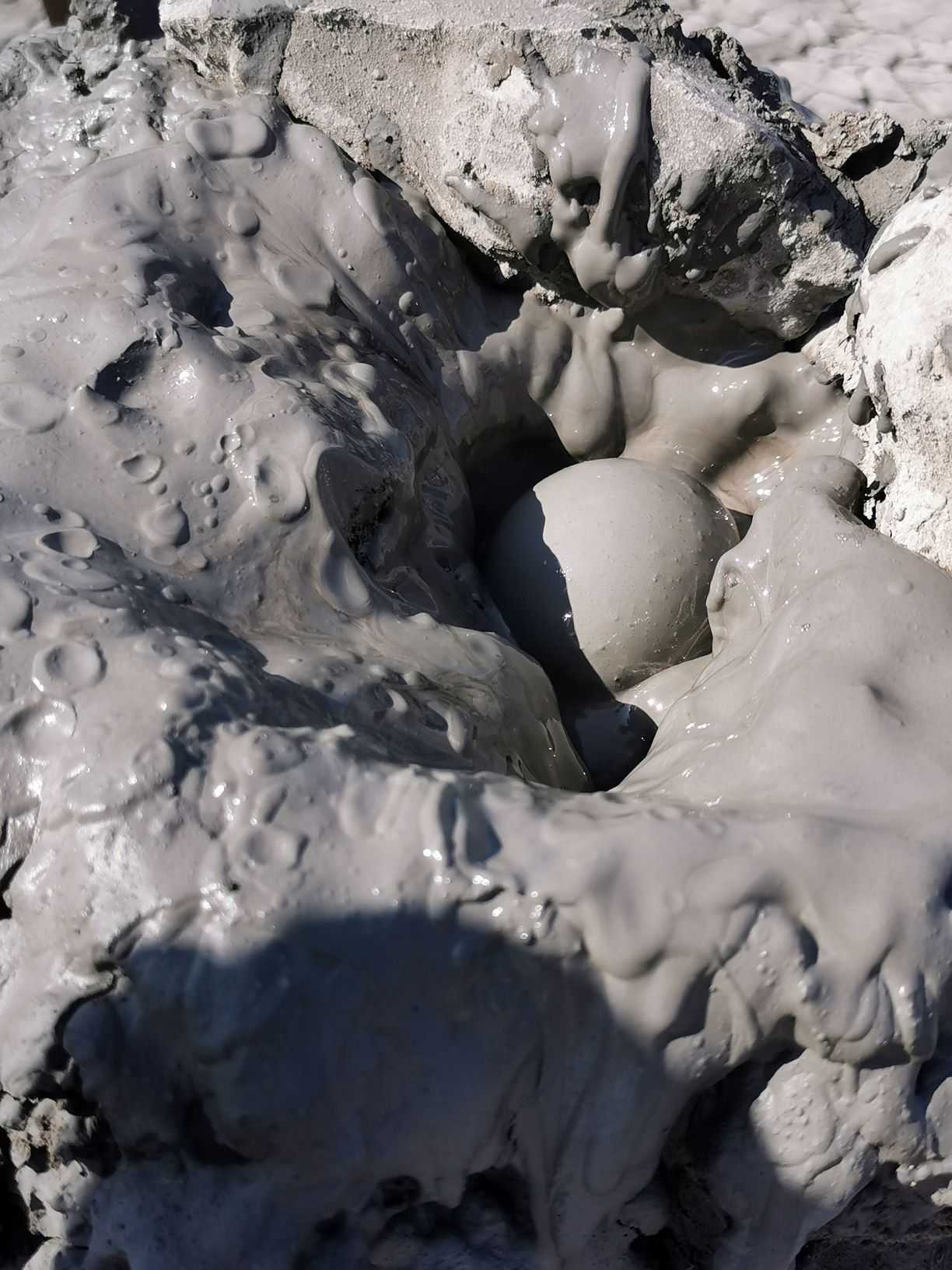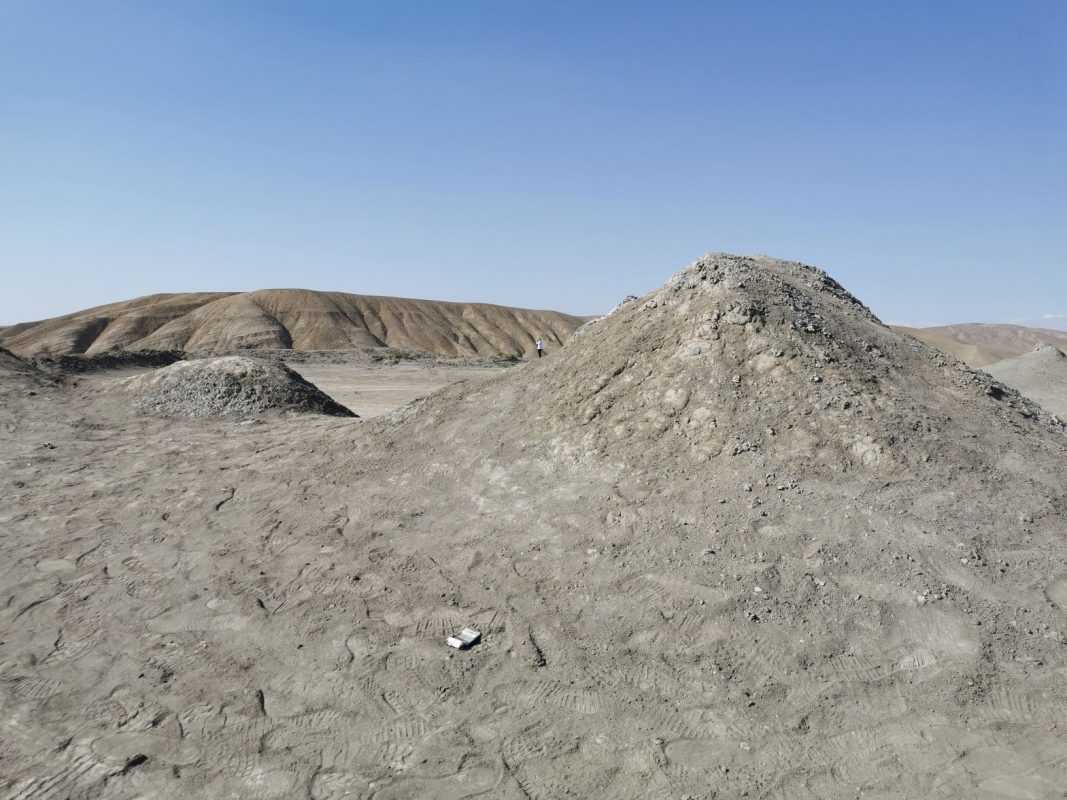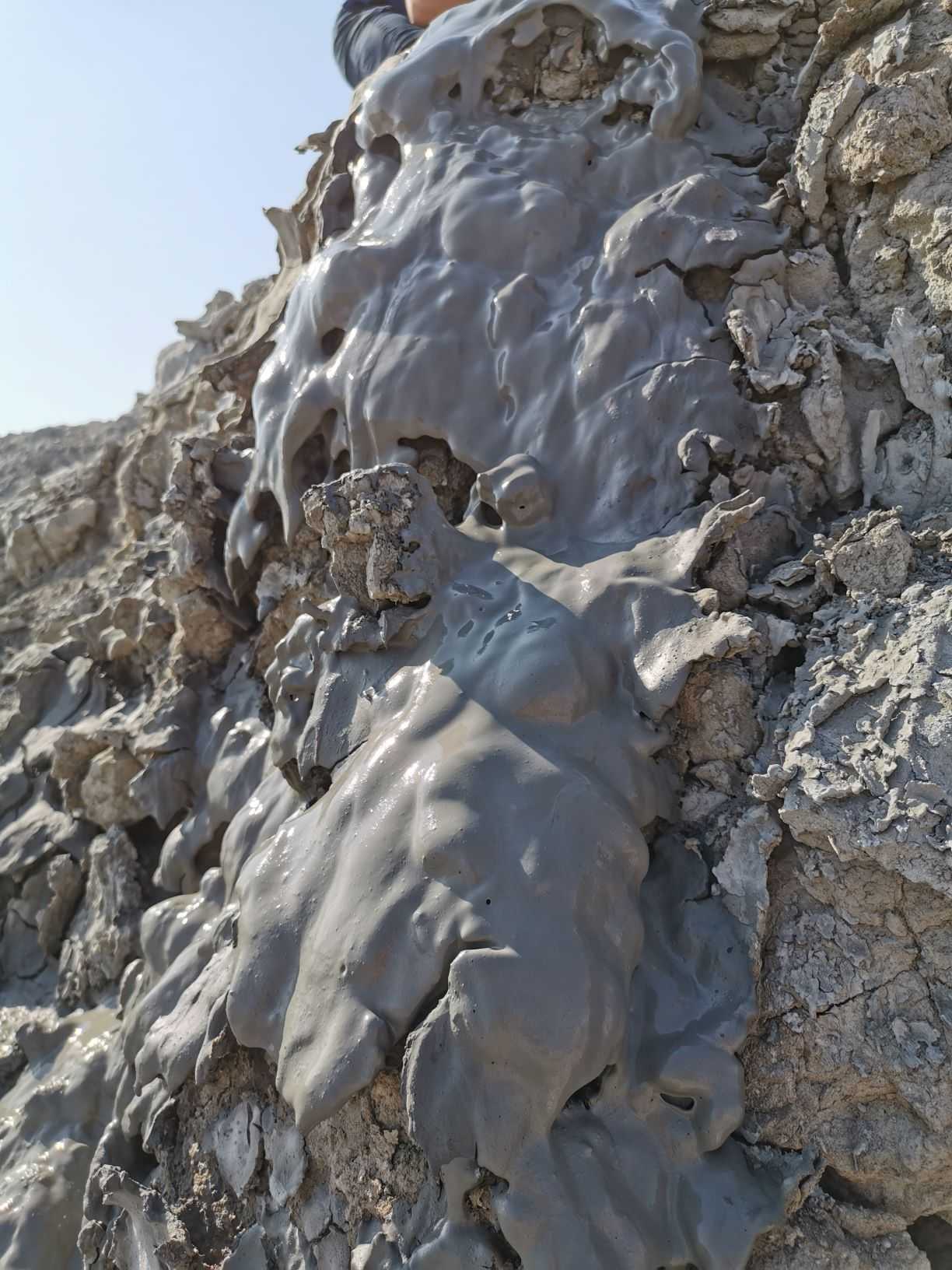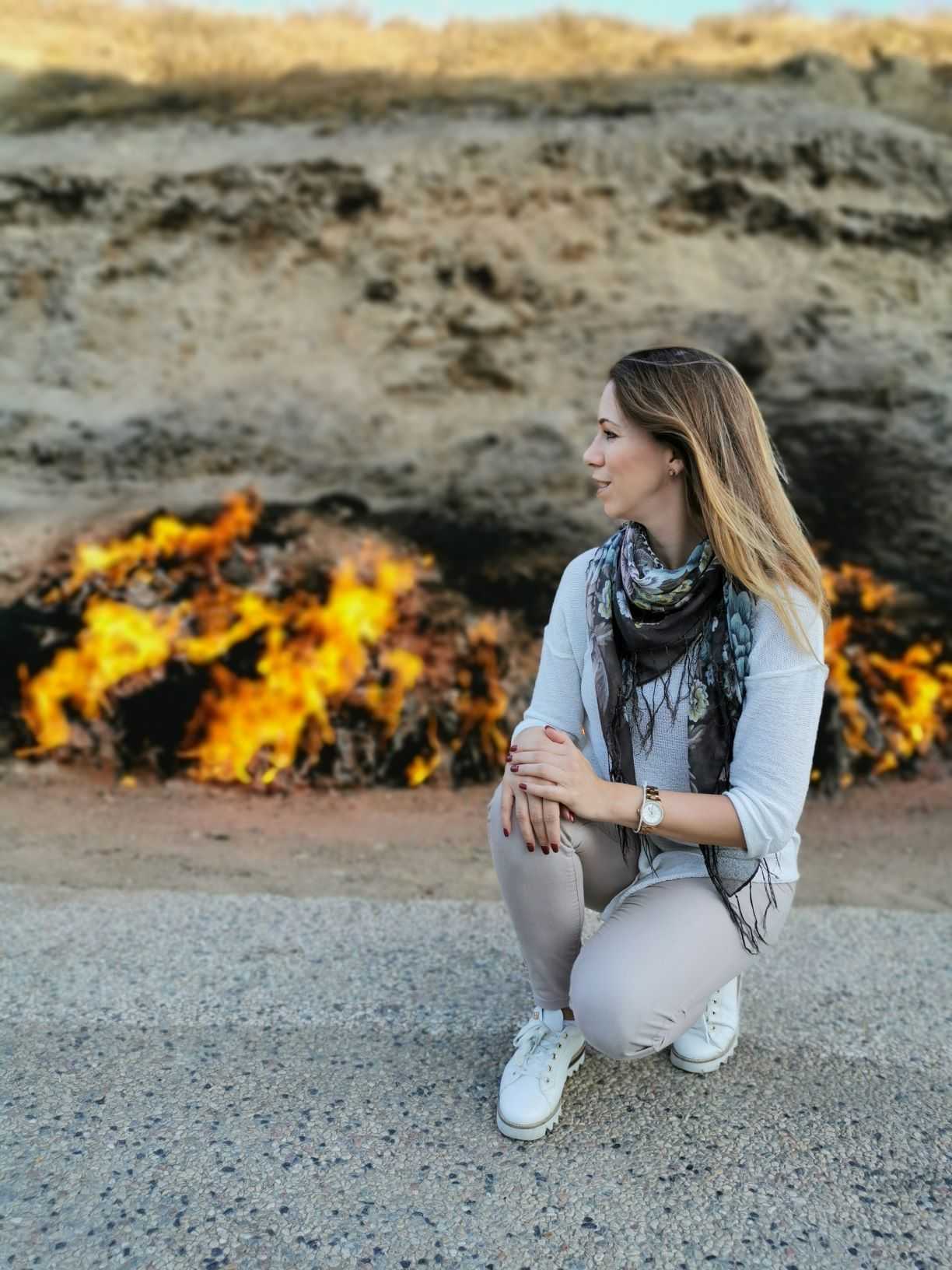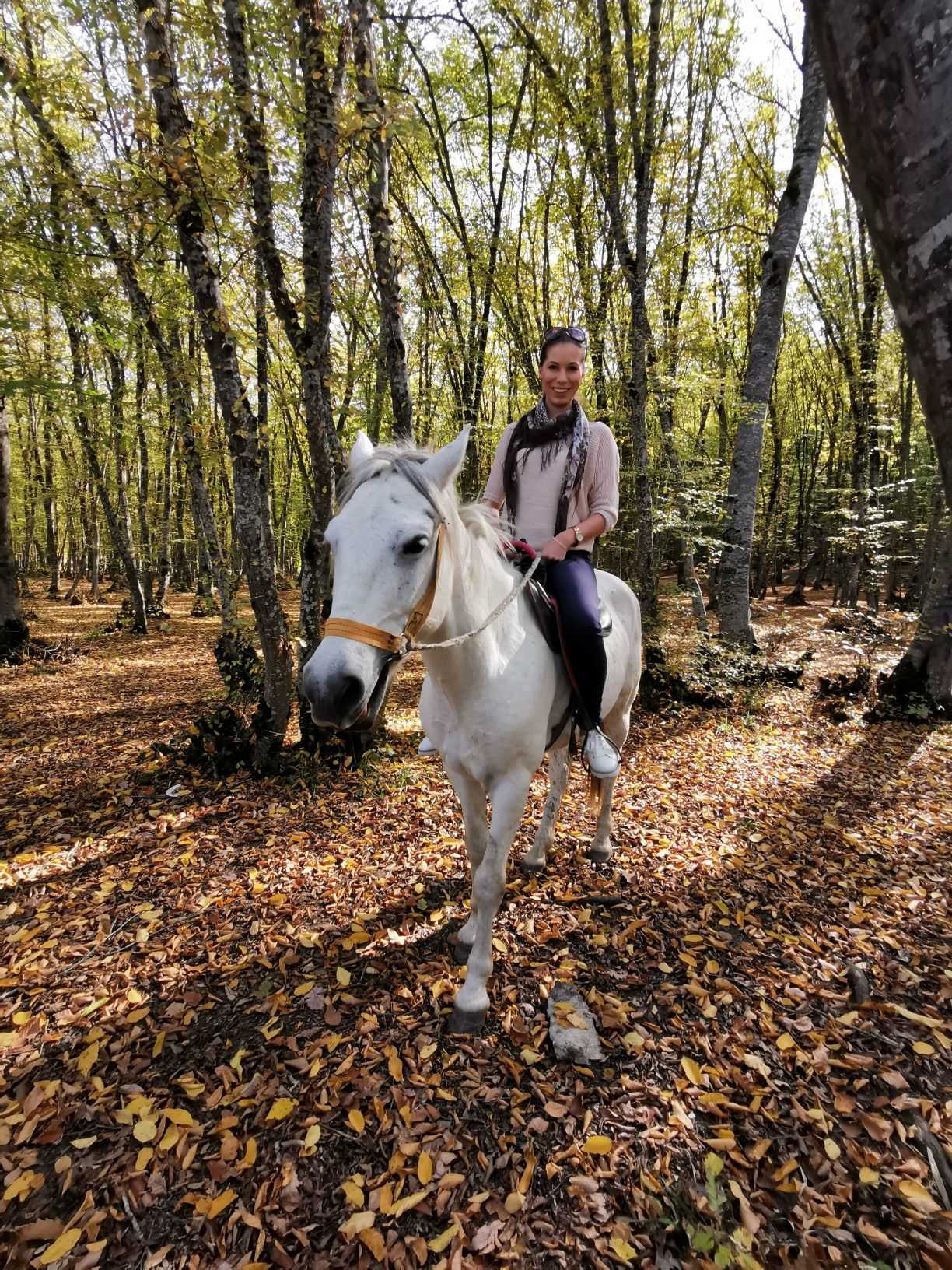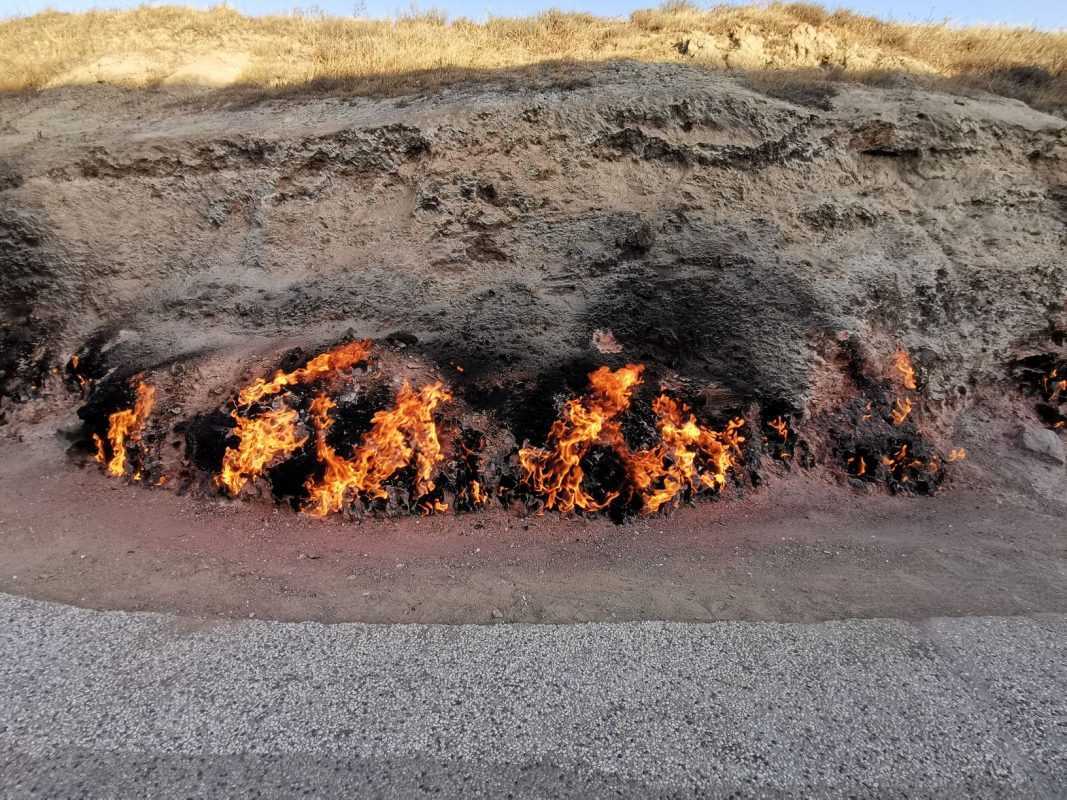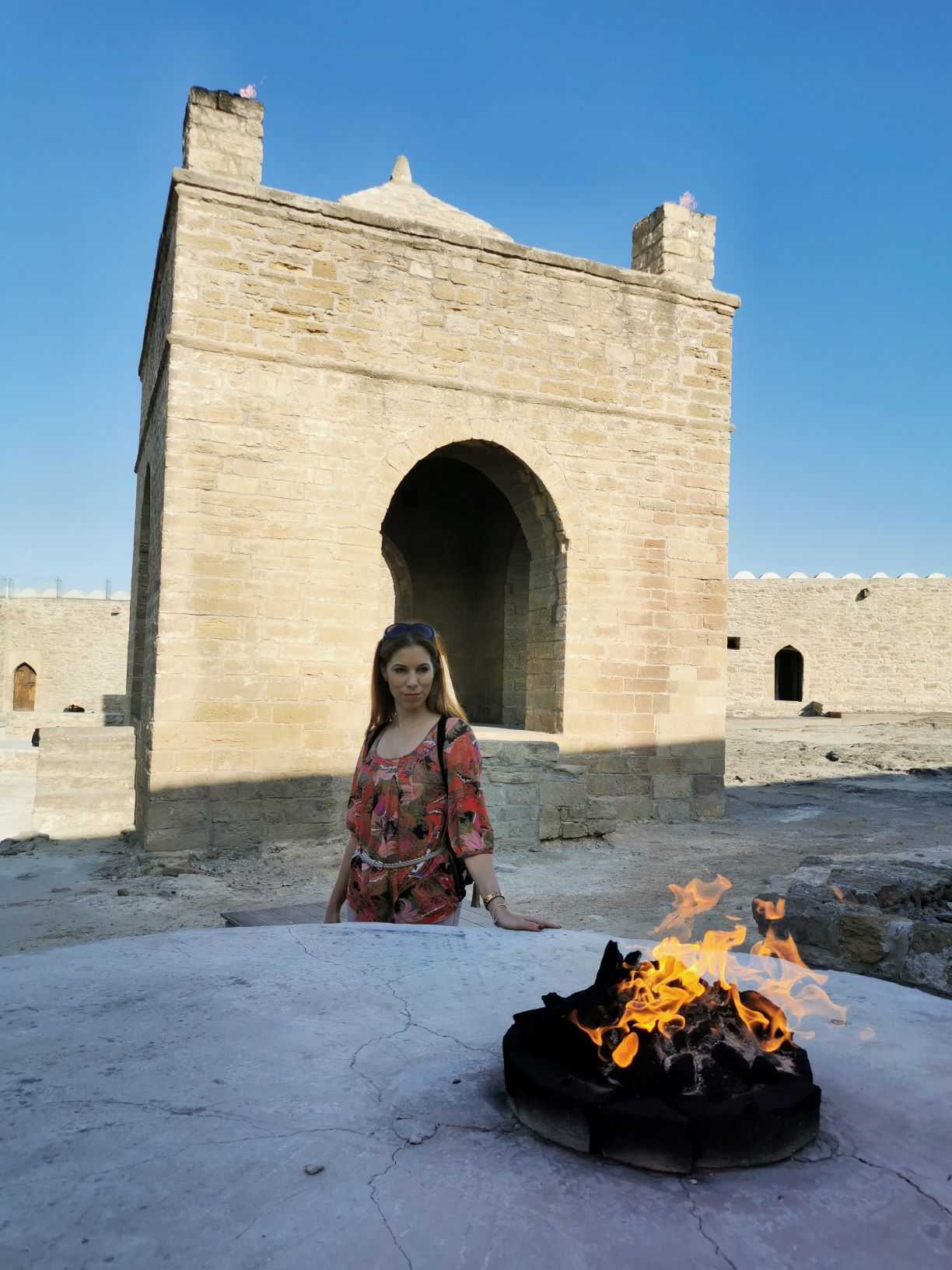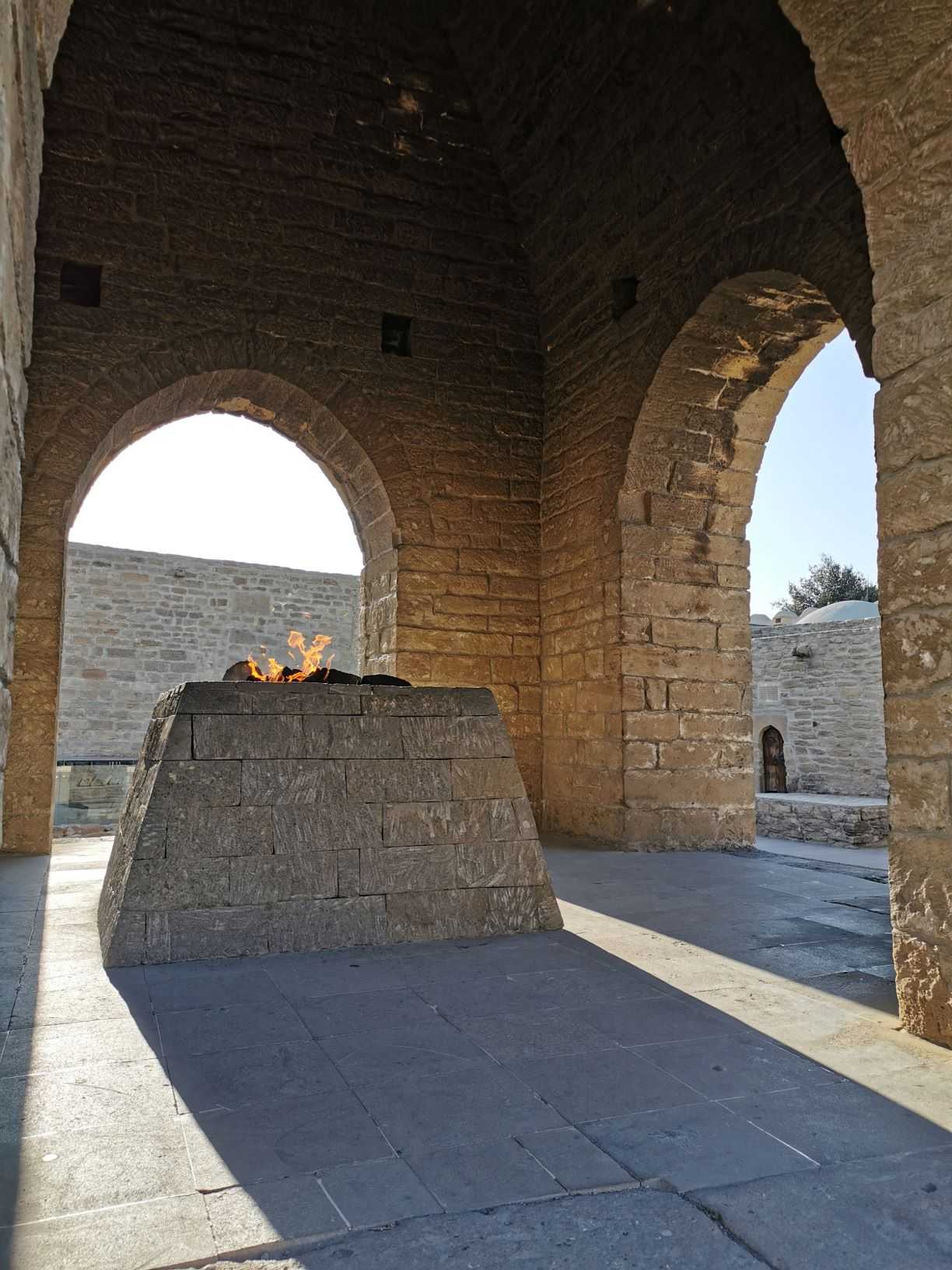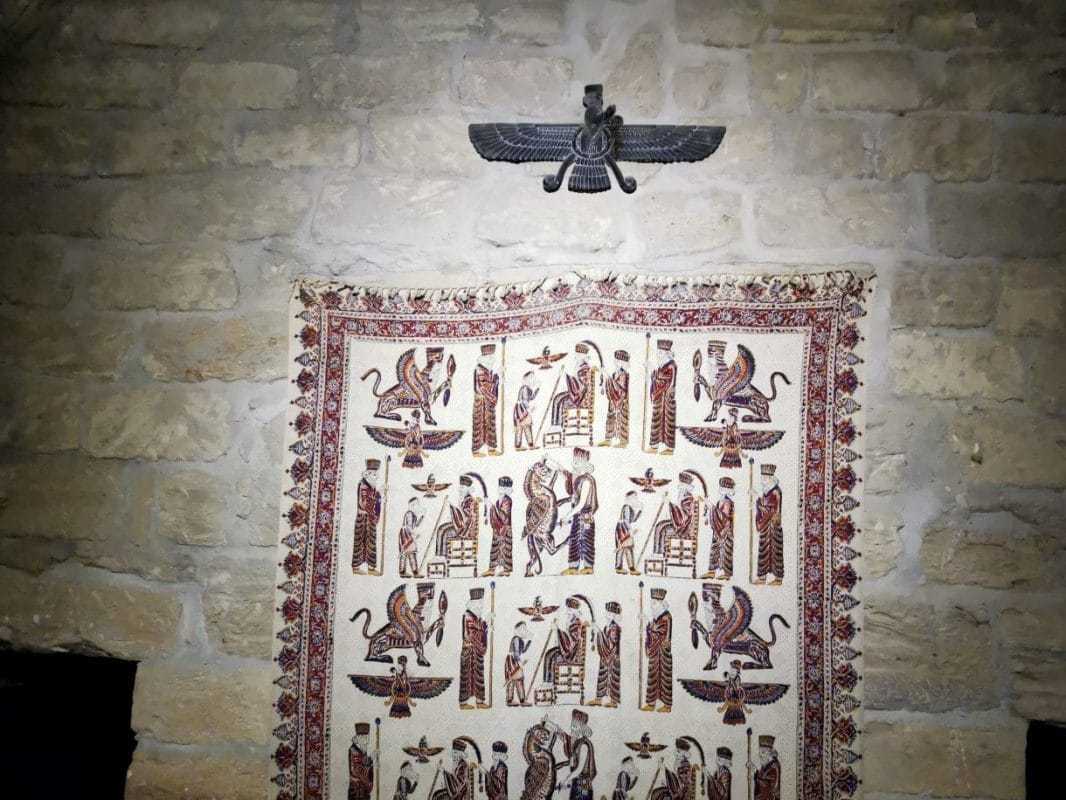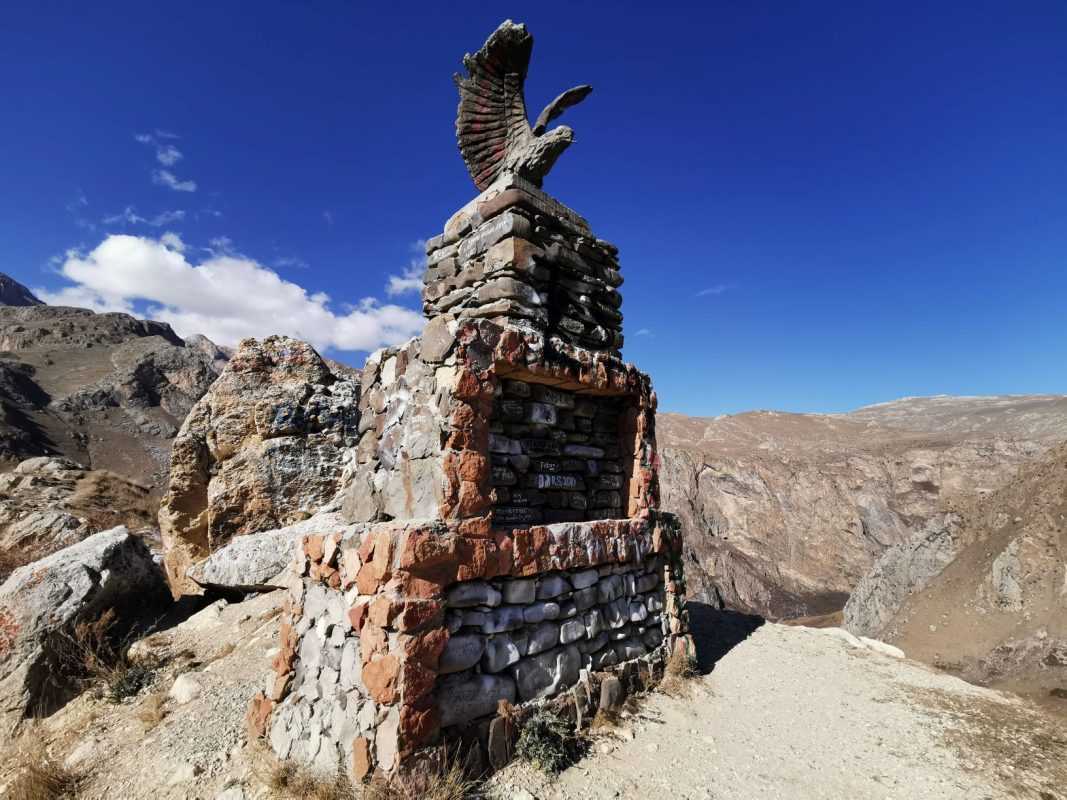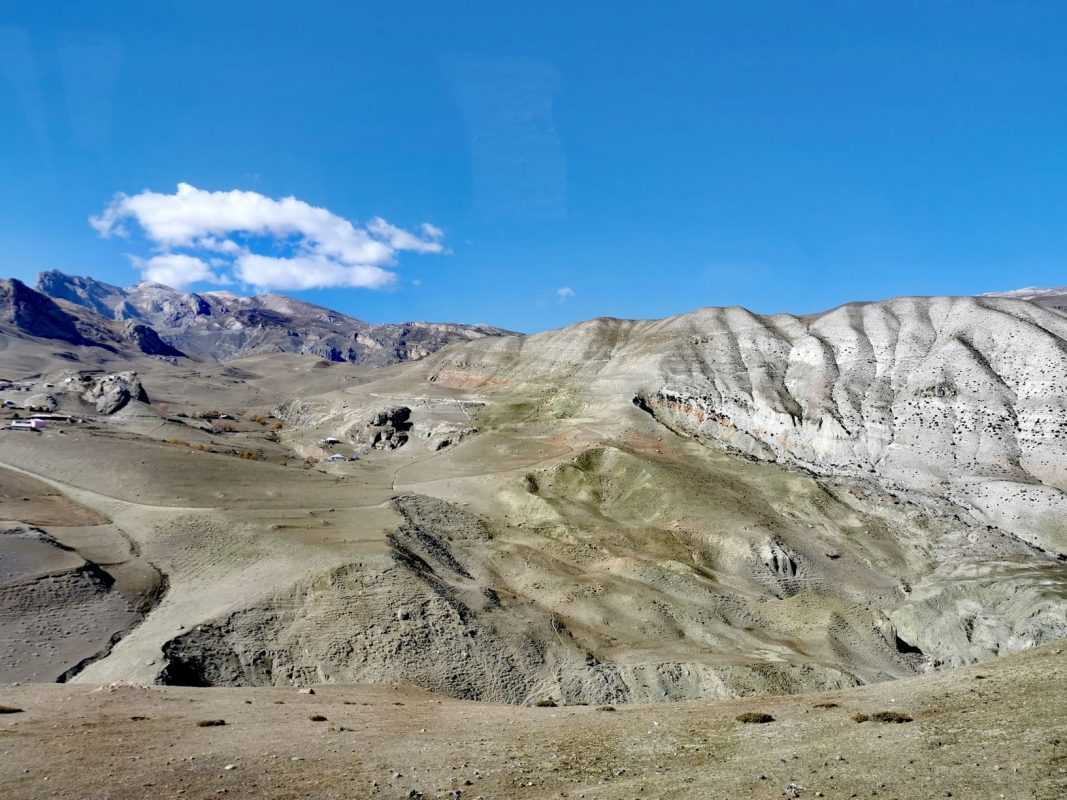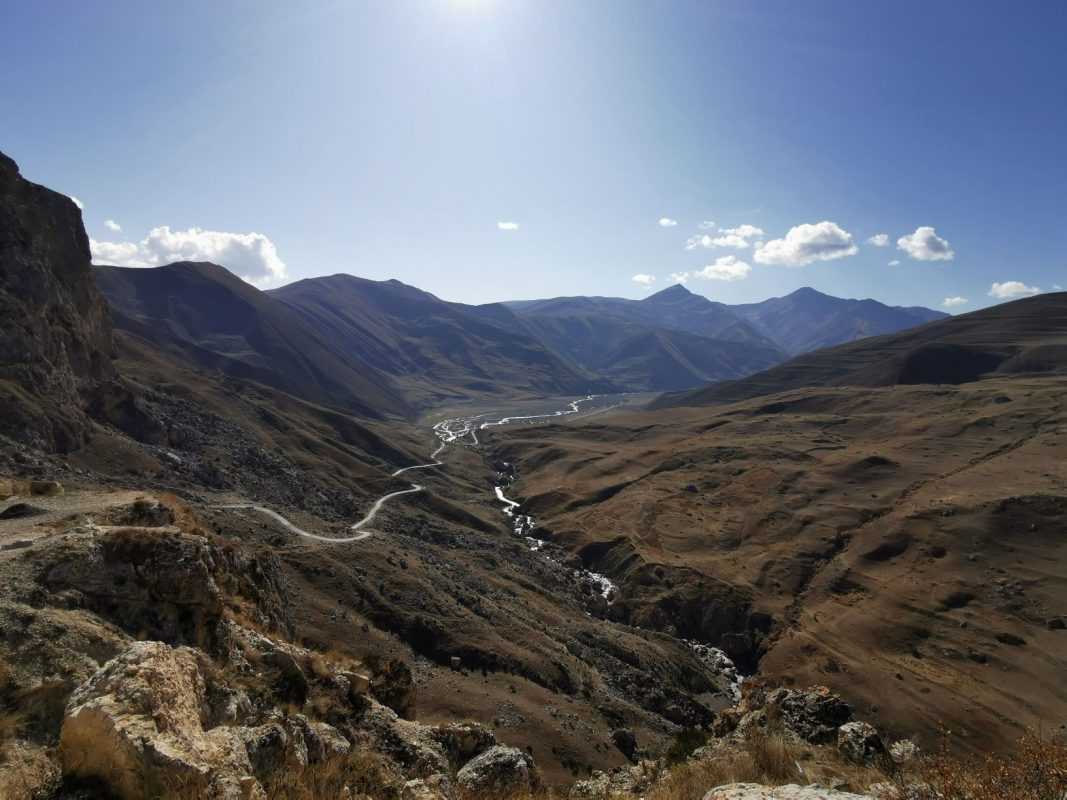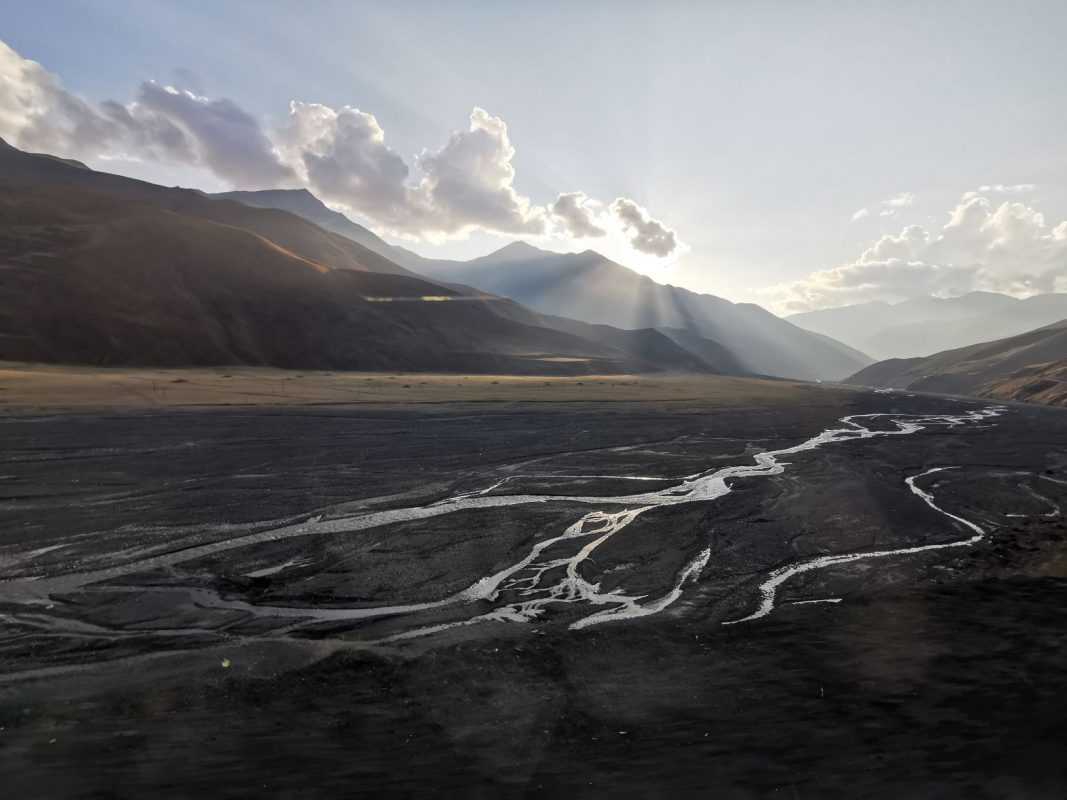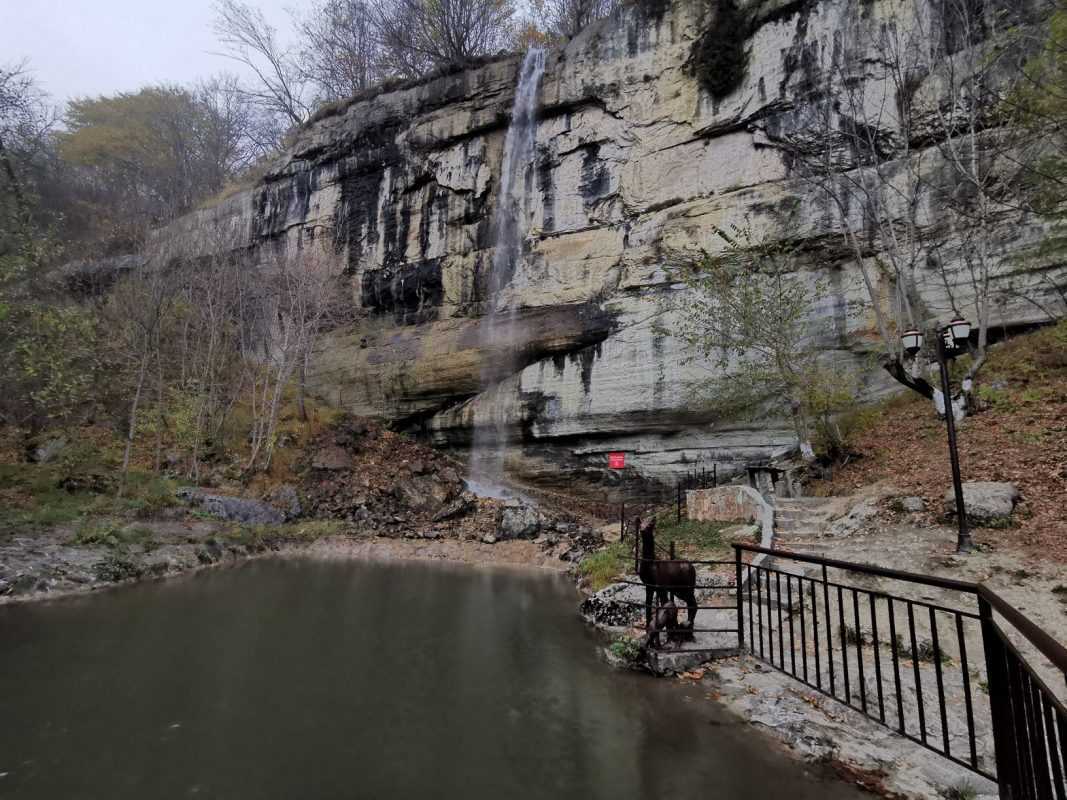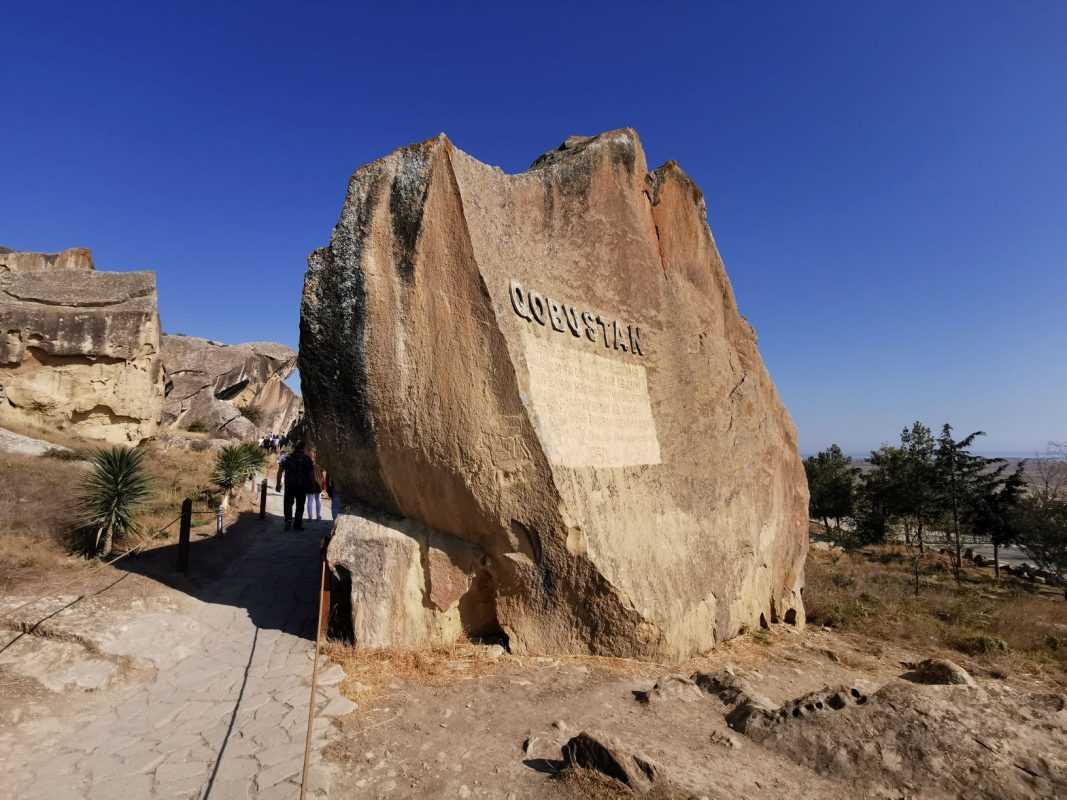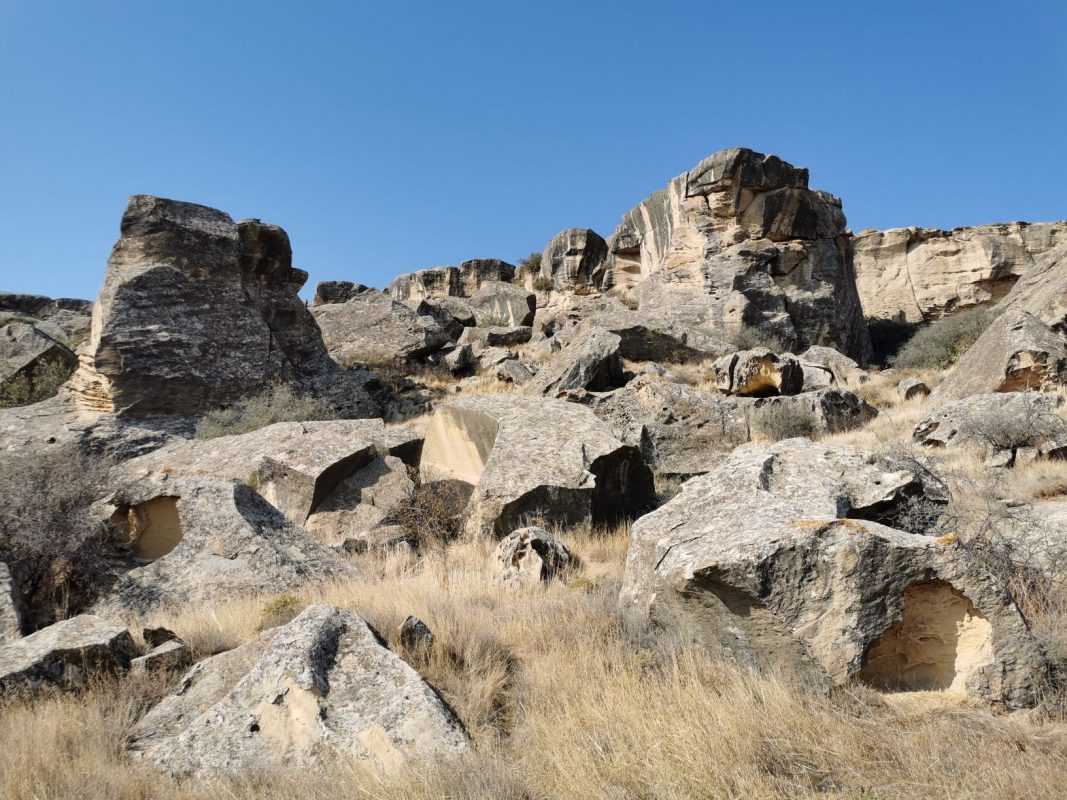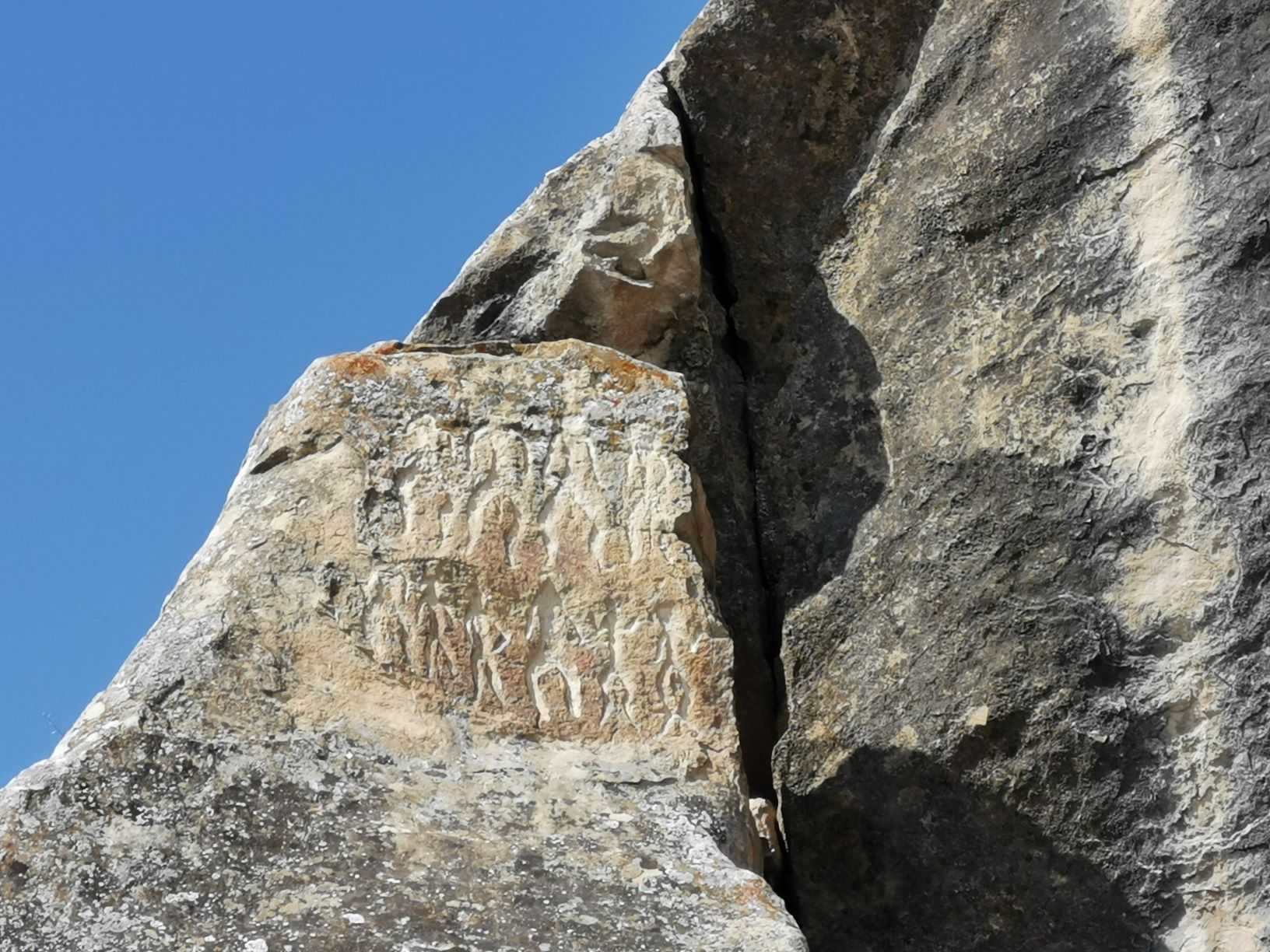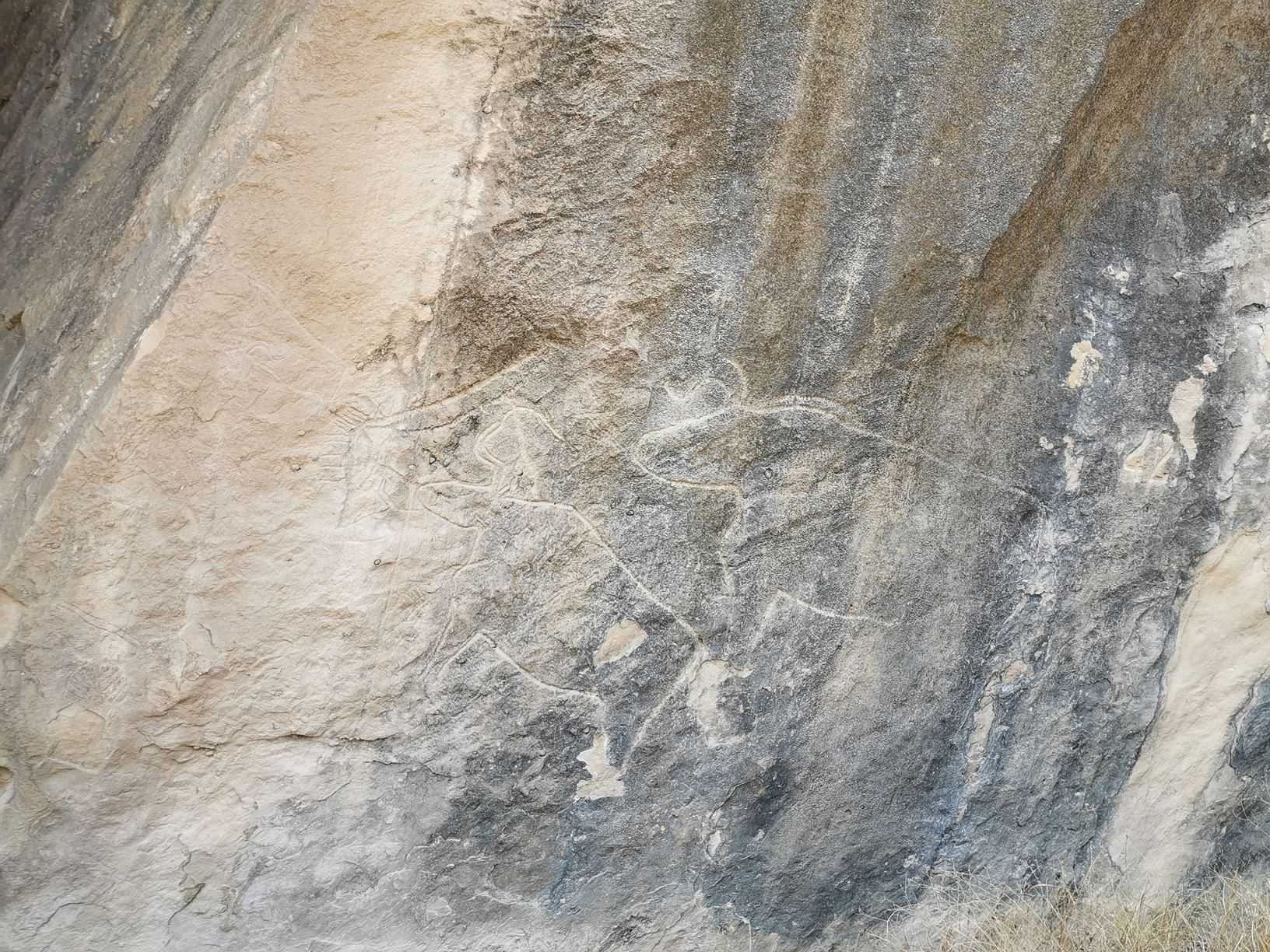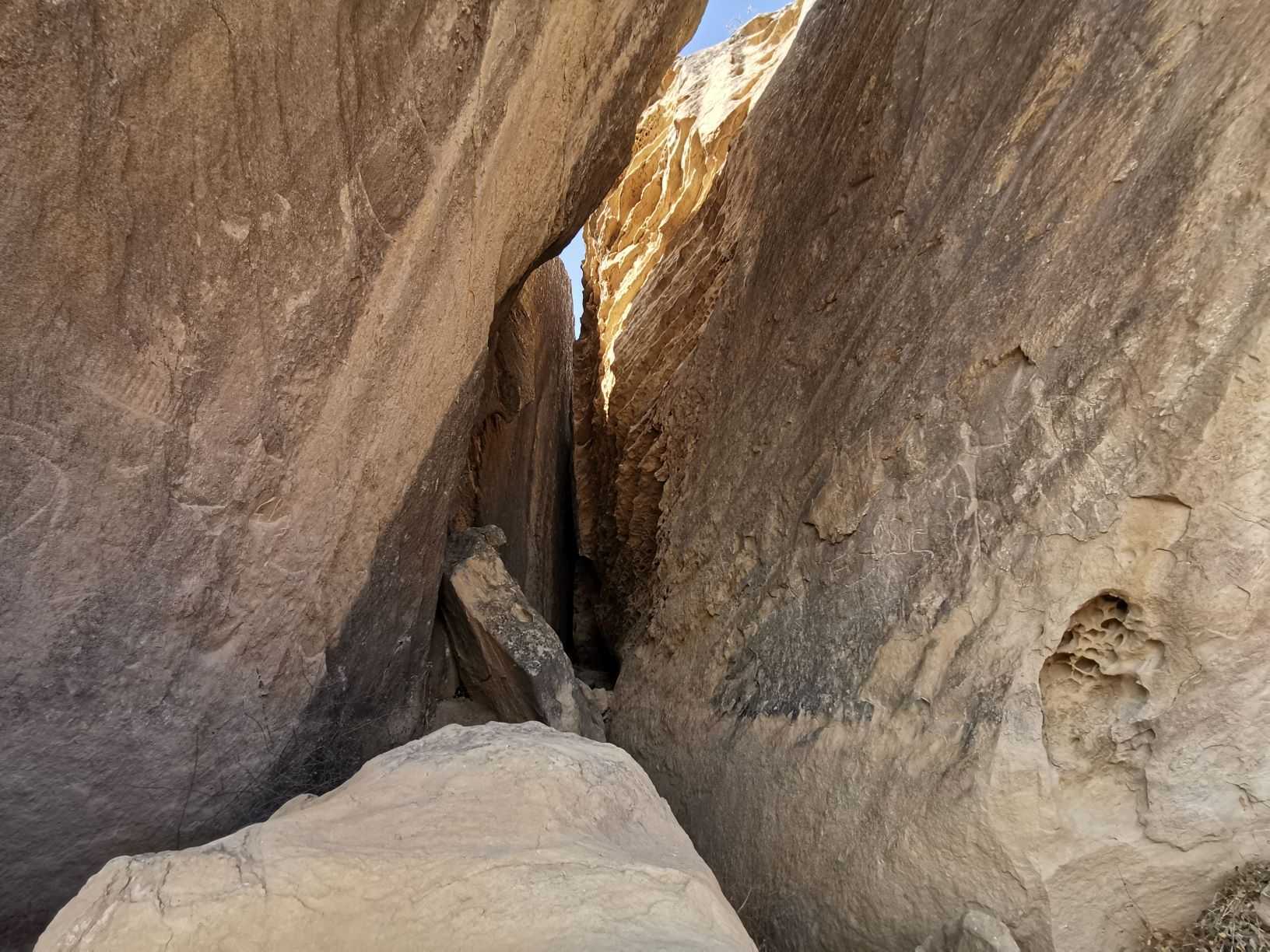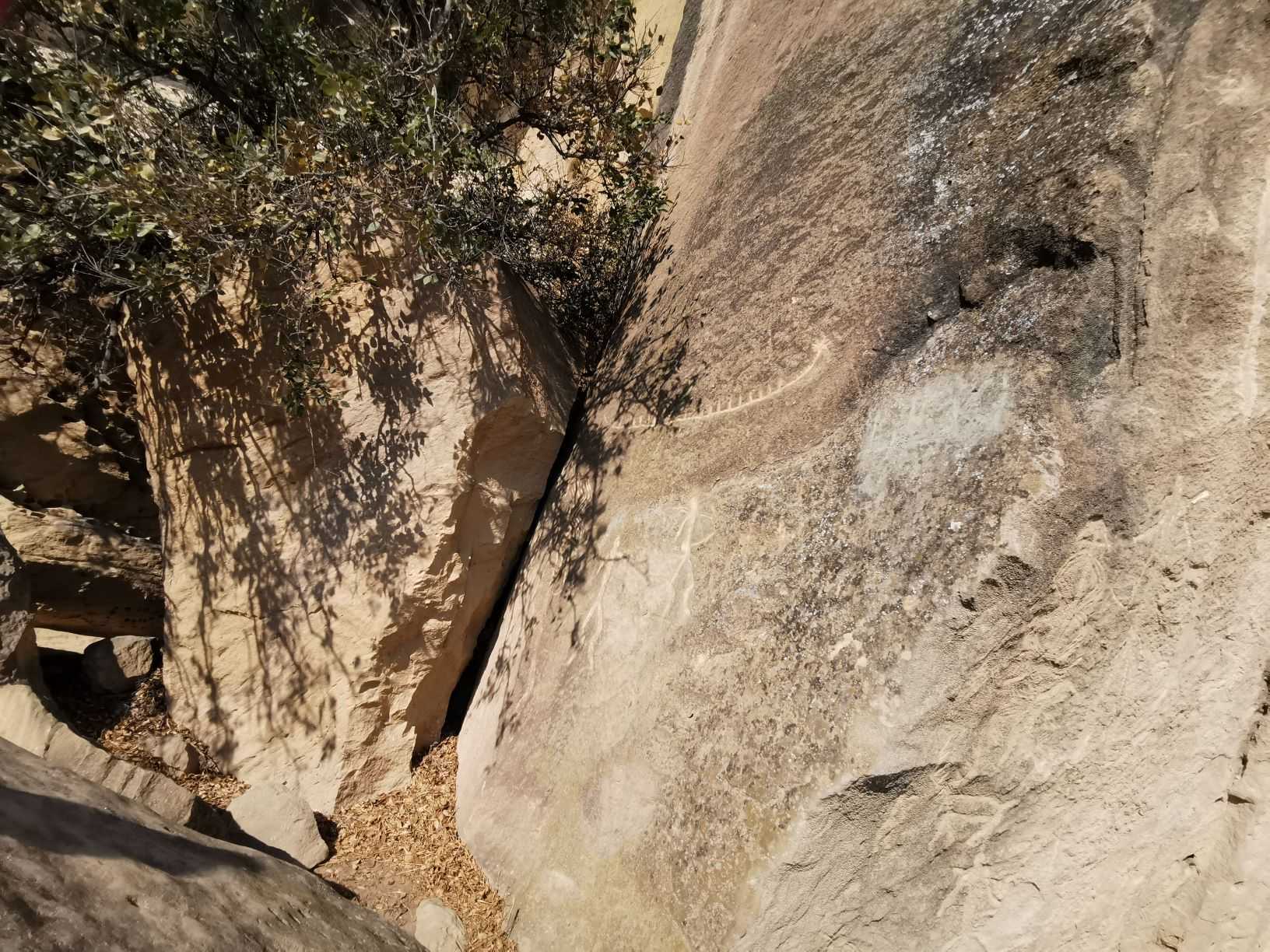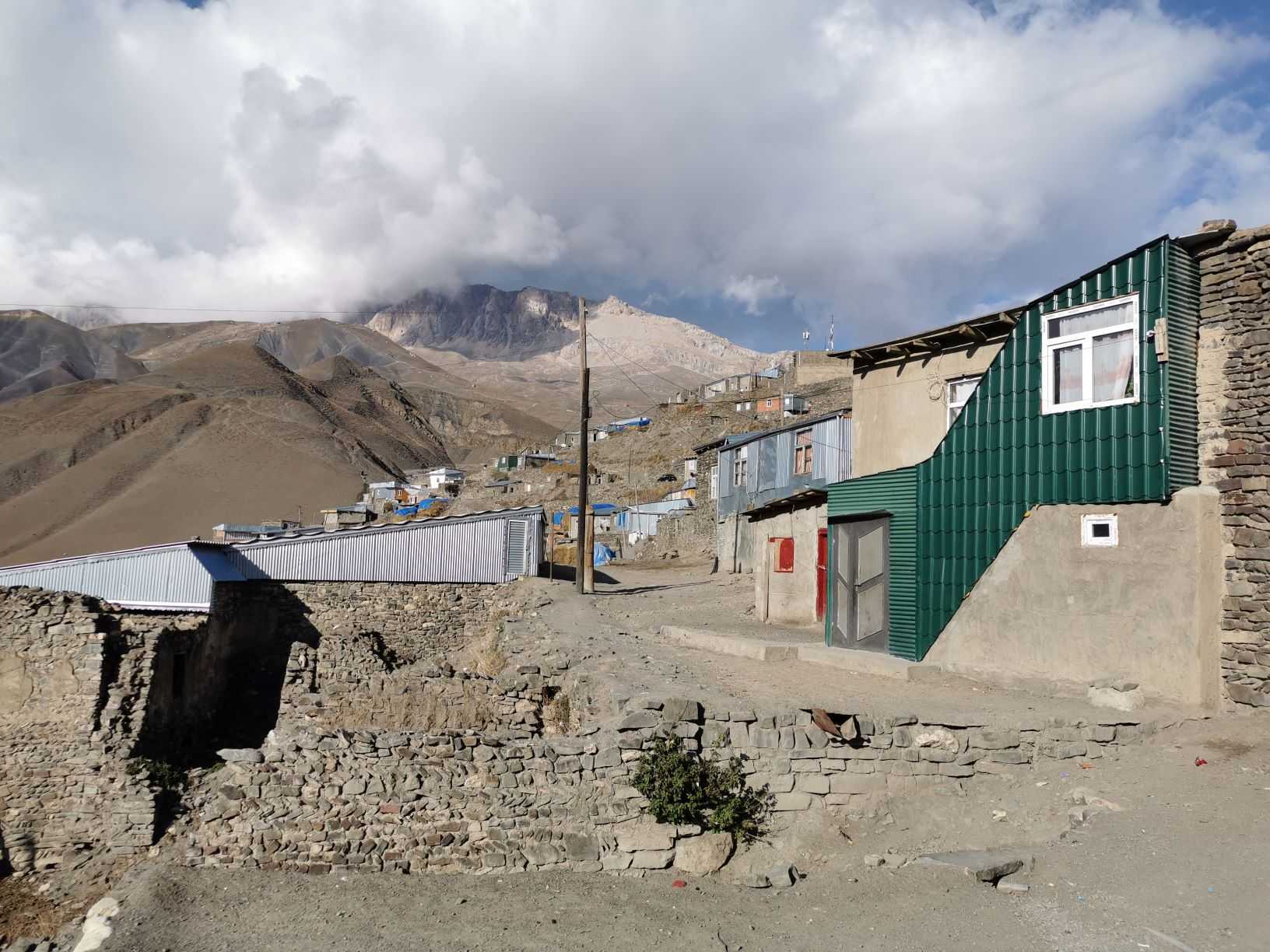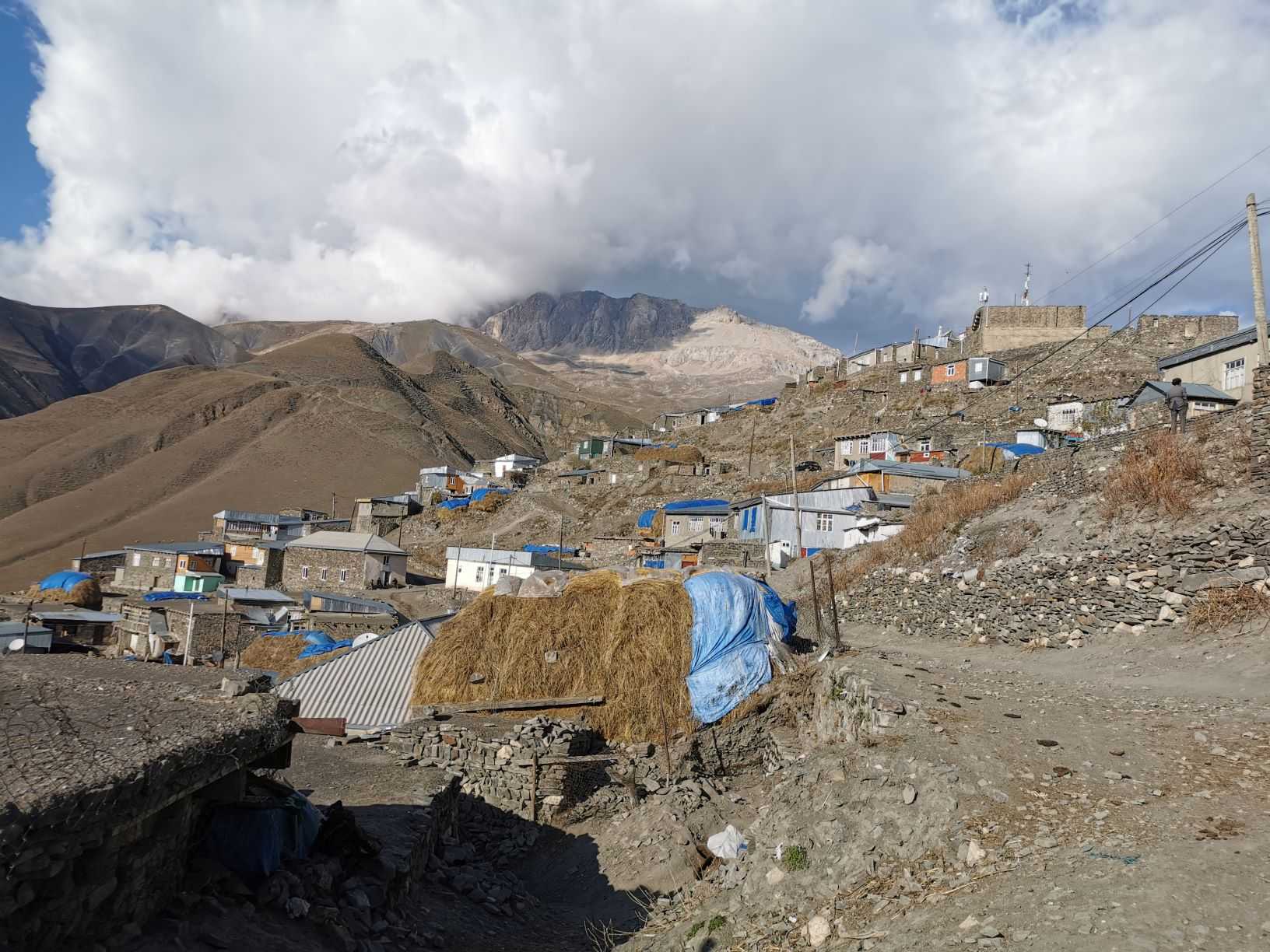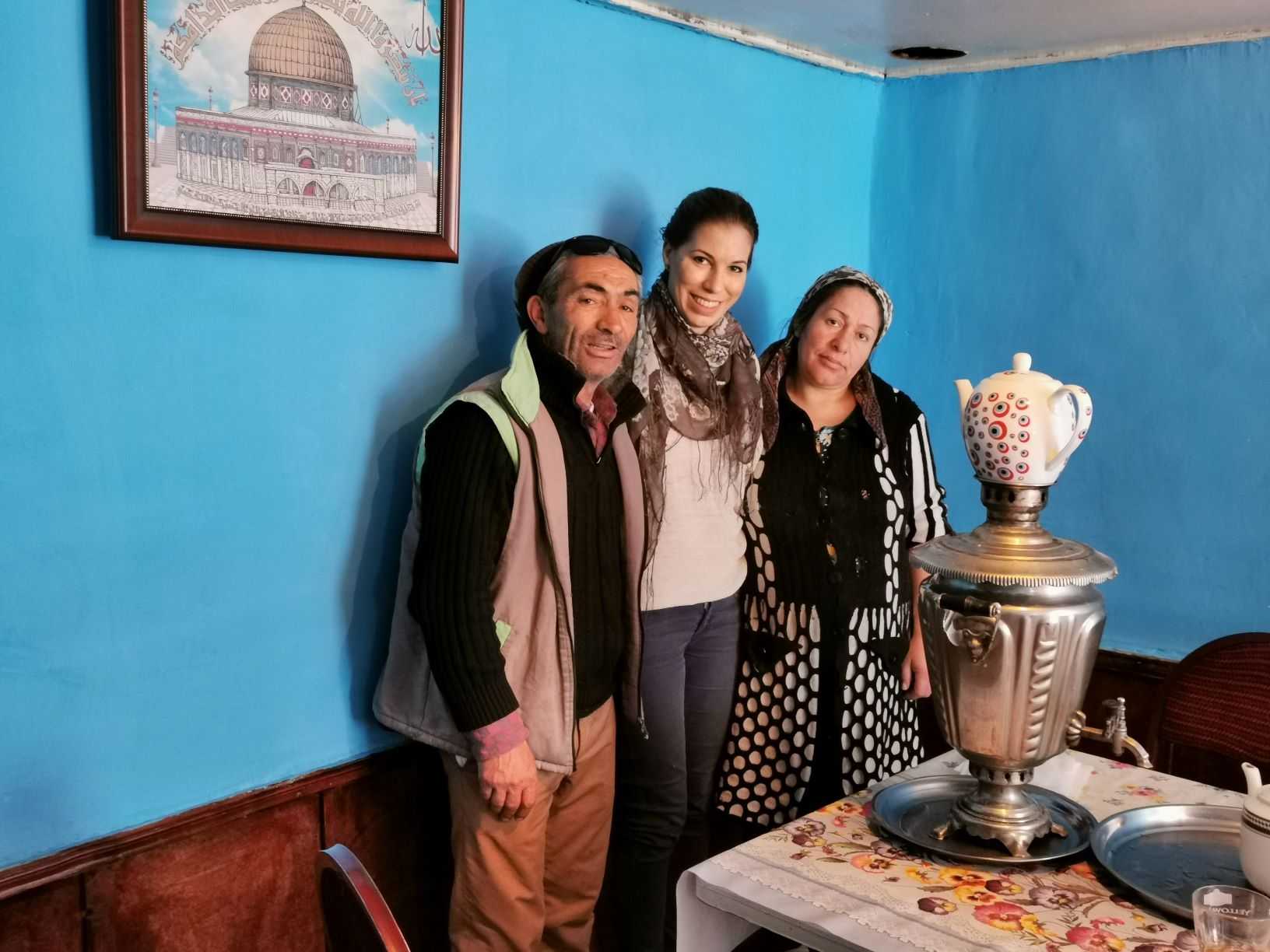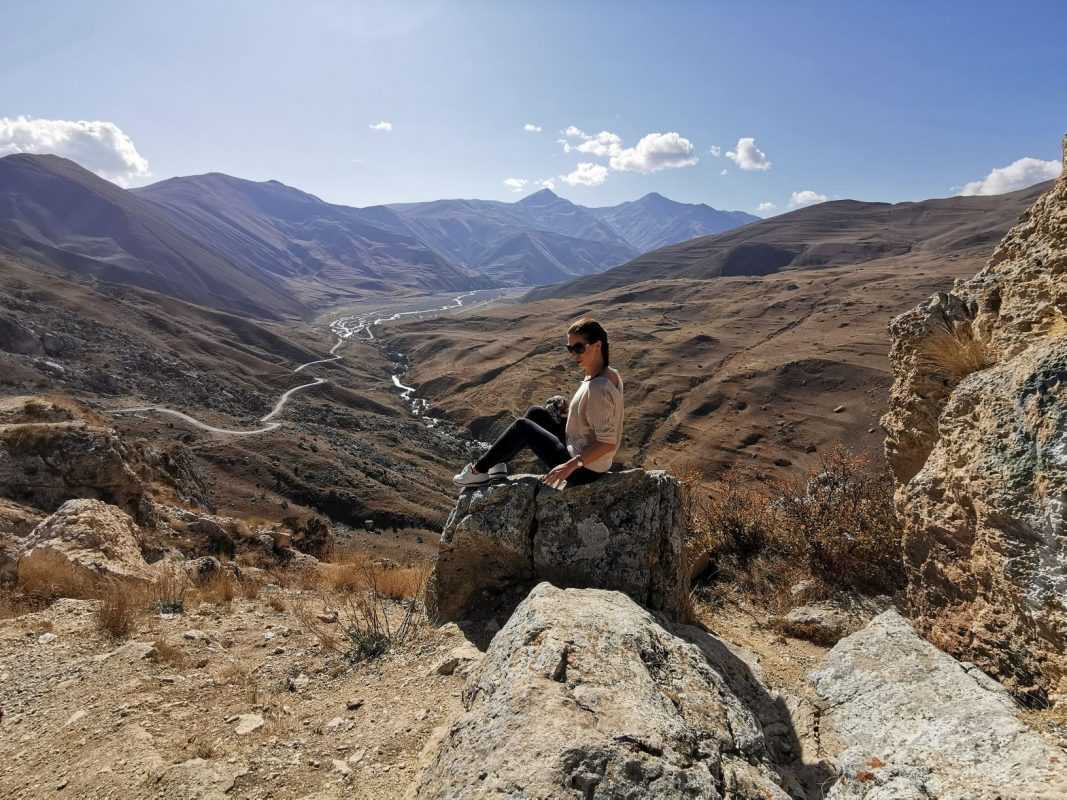Azerbaijan’s name reminds most people of the capital, Baku, where splendor and wealth can be seen everywhere. However, it would be a mistake to assume that the country consists only of futuristic buildings and that oil flows from the tap. If you want to get to know the true face of Azerbaijan, you should head to the Gobustan Desert or the mountains of the Caucasus. Far from the capital and out of the shadow of the Flame Towers, there are treasures on Azerbaijan’s territory as few places have in the world. Where not only one’s heart fills with warmth, but also the ground sometimes gets hot under his feet. Not coincidentally, because in Azerbaijan we are indeed in the land of fire.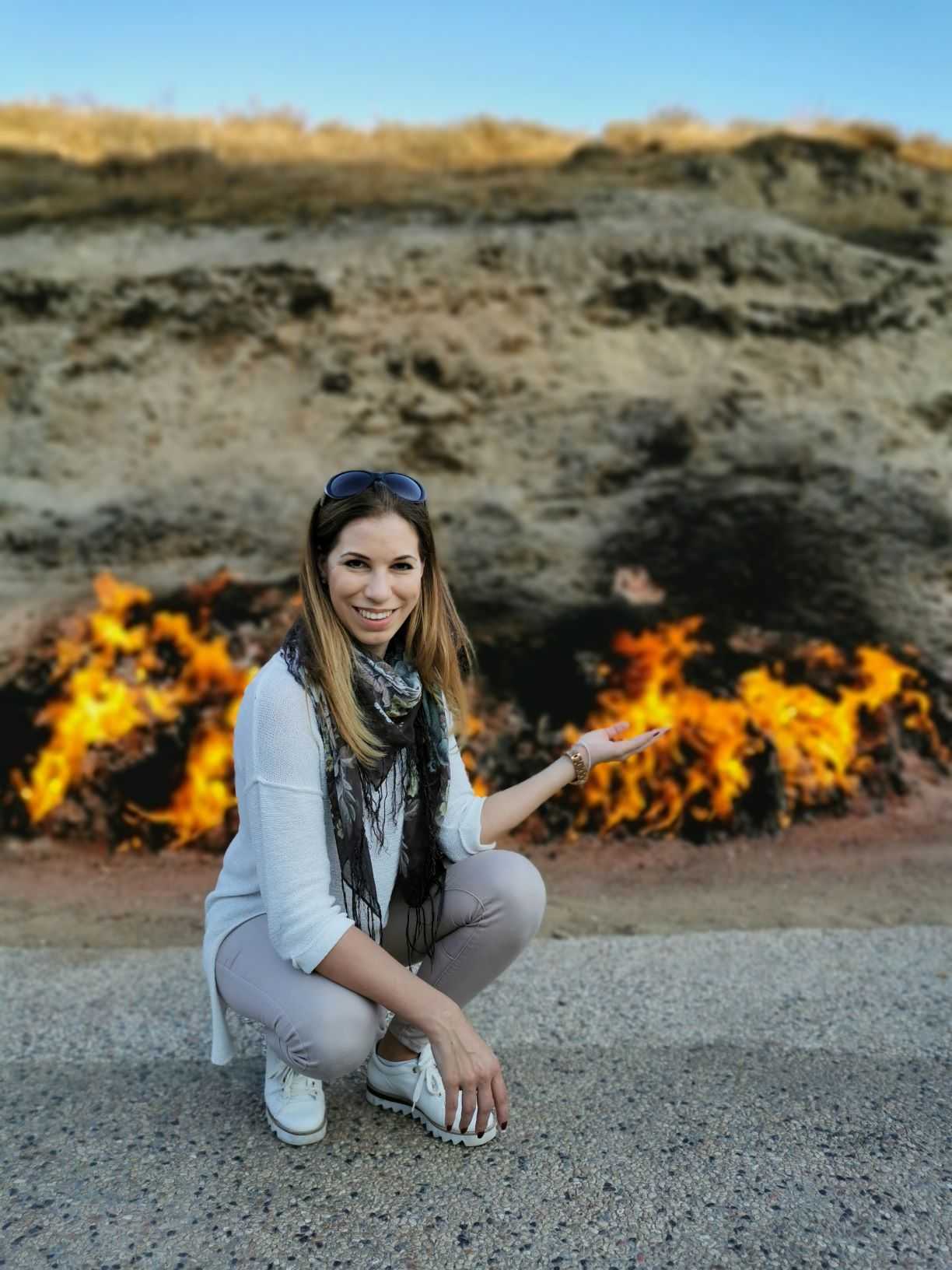
Baku, lying on the Caspian coast (I wrote about the city here) is inescapable when you are in Azerbaijan. I, on the other hand, have always been more attracted to natural sites than the built beauties of a certain place. So I couldn’t wait to get out of the artificially created city and make my way to the countryside. In general, I prefer self-organized excursions, so in most cases, I rent a car or take public transport from A to B. Let us quickly forget this when you are in Azerbaijan because there are no long-distance flights in the mountains and most of the roads leading to the desert are bad. So due to the lack of local knowledge and the quality of the roads, I would rather not drive if I did not have to.
So we stayed for the organized excursion through a local office, where we managed to get everywhere safely with the tour guides, but dangerous drivers. We almost got everywhere with exception of Sheki, which hurts my heart because it is a World Heritage Site. But let’s not be insatiable, we’ve seen two other UNESCO World Heritage Sites. If traveling is all about to tick off everything from the list, it’s all about an impromptu treasure hunt. In which, after all, we find neither treasure nor excitement. I filled my treasure chest with many good memories, which I summarised in this blog post.
Mud volcano
These natural formations, reminiscent of most moles, are special and were formed 25 million years ago. Azerbaijan has 45% of the world’s mud volcanoes, 350 pcs, thanks to the many oil and natural gas found in the ground. Due to the gas flows in the depths, volcanic activity is continuous, the strength and appearance of which vary.
In some places, sizzling air like fumarola comes to the surface, elsewhere the methane burns on top of the mud, and in others a mixture of melted lava and mudflows down the side of the hill. In addition to the construction industry, the latter is used in the chemical and pharmaceutical industries. Geologists and NASA scientists compared samples collected from mud volcanoes to those from Mars and were surprised to discover a rock match. Volcanoes, which often have a depth of up to 1000 meters, are very capricious, so approach them with caution. The Otman Bozdag volcano, which erupted in 2018, covered a radius of about 4 km with mud, of course, during this time tourists were not allowed to visit the otherwise peacefully bubbling desert bumps.
Yanar Dag
If we are talking about burning mud volcano and fire land, then take a detour to Yanar Dag, where the fire is constantly burning. Neither rain nor snow has been able to extinguish this since a shepherd lit the methane gas that came to the surface in the 1950s. The location itself is at the bottom of a hillside with a sign at the top that is similar to the Hollywood inscription. At the bottom of an amphitheater, the fire burns as the main attraction, which I really say without exaggeration that it is very hot. Specifically, while making some portrait photos, I got a minor burn, because the part of my ankle wasn’t covered in pants. But at least you can’t tell I’m not a girl on fire. Advice: you should not try to live your pyromania hobbies or worship your gastronomic passion here. The gases are extremely explosive, and you can even smell them in the air from time to time.
Riding in the forest of Qachrash
Although it’s basically a tourist attraction to ride in the woods next to Quba, it couldn’t be missed for 10 AZN (about 1,700 HUF). During the summer months, the forest is so dense that the ray barely penetrates, but in autumn the forest offers no less beautiful views due to the beautiful yellow leaves. The white horse already has it in the picturesque surroundings, but where’s the prince to it? In addition to Qachrash, there are many chalets and barbecues for picnics, which are also used by locals. The cheese wrapped in iron-fried tarts, seasoned with fresh parsley, is a real specialty, it is worth tasting.
Fire temple
Located 15 km from Baku, it is one of Azerbaijan’s most beautiful fire temples, proclaiming the ancient religion of Zoroastrianism. As I wrote in my previous blog post (read here), it is the world’s oldest monotheistic religion and roots dating back to the 1st millennium. The name of Azerbaijan itself means in ancient Persian (Āturpātākān) that, in addition to the keeper of the fire and Yanar Dag, this fire temple also commemorates it. In the temple also named Ateshgah (Atesh=fire, gah=throne), the sacred fire in the middle of the Pentagon-shaped courtyard in honor of Ahura Mazda, the creator god, is constantly burning. Fire is one of the most important ritual symbols of Zoroastrian believers, embodies divine brilliance and glory.
The fire church, which combines Azerbaijani and Indian motifs near Surakhany, was in use until the end of the 19th century. Despite the country’s population has converted to Islam since the 7th century, the nurturing of ancient traditions has not ceased to exist. The fire temple closed in 1883 when the last monk went back to India because the natural flame had fallen asleep. Today, the continuously burning fire is fed through an artificially built natural gas pipeline, while the buildings’ premises function as showrooms. Because of its cultural and religious significance, the fire temple has been added to a UNESCO World Heritage List.
Our local tour guide has shared many interesting things with us, one of which I would like to pass on. The winged, Faravahar symbol is more than 4,000 years old. In Egypt and Mesopotamia, it symbolized the divine presence and sun, while in Zoroastrians it was metastasized to Ahura Mazdah as the creator god, although never depicted in human form, but rather existed in our minds. In any case, Faravahar refers to a guarding spirit that protects man on the way to God after the mind leaves the body. If you’re familiar with this symbol from somewhere else, it’s not a coincidence. In fact, the Nazis exalted not only the swastik of Hindus, but also the ancient winged symbol of the Zoroaster’s and became a symbol of one of the most tragic events of the 20th century.
Caucasian mountains and eagles
For me, the real mountain adventure began at Qudyalchay Canyon, where we pulled out of the car and stopped by a torrent of water. It was cold in the canyon, which was cut into the steep mountains, but when it came to the sun, the 2-3000-meter high mountains of the Caucasus provided a dazzling view. According to Greek mythology, the Caucasus was one of the pillars of the world. The god Zeus commissioned Prometheus to create people to populate the earth, in the image of the gods. Prometheus had his heart broken on his own creatures and gave them the invention of fire, which until then was the property of only the gods. Zeus was angry about this and chained Prometheus to the rocks of the Caucasus, so that every day a giant eagle (Ethon) would feast on his liver. The liver consumed grew back every day, so Zeus planned that this punishment would last at least 30,000 years. His own son, Herakles, pulled through his calculations, shot the eagle and freed Prometheus.
The truth of the story cannot be verified and we don’t know exactly where it happened if happened, but the fact is that eagles can still be seen over the mountains of the Caucasus to this day. I saw them on Eagle Peak with my own eyes, it was a fantastic moment. What an interesting parallel Prometheus brought the fire to the people and almost became the land of fire in the mountains of the Caucasus.
Mastargah waterfall
While hiking, you can easily find waterfalls in the mountains of the Caucasus, in which Azerbaijan excels. The largest, the 75-meter rapids, is in the Afurdja Quba area, while the highest is a 4,242m waterfall. We saw a waterfall of more modest size, also in a somewhat artificial environment, as a complete restaurant complex was built around Mastargah. If it’s a waterfall, nothing has surpassed waterfalls in Flores (you can read about this here) flowing into the Atlantic Ocean, but Lagoa do Patos was also memorable for me so far. Neither the Icelandic waterfall, although they are certainly wonderful. But on the way back to Azerbaijan, I’m glad we saw a smaller waterfall.
Gobustan rock drawings
Azerbaijan’s oldest and most extraordinary place is in the Gobustan Desert and is due to a bit of accidental luck that it can now be a UNESCO World Heritage Site and is highly protected. In 1930, quarries found in the desert, 65 km far from Baku priceless drawings, which range in age from 4 to 8,000 years old. Although some estimates suggest that some of the drawings were created before the Ice Age, some 20,000 years ago, and show the daily lives of our ancestors.
Of the 3,500 rock drawings in Gobustan National Park, about 50-100 can be seen by tourists. It is an incredible experience, as memories of an ancient, that a bygone age comes to life in the picturesque landscape: warriors, lions, bulls, fat mother figures and so many other characters from the Paleolithic period. The drawings are made by chiming, scoring or sanding, and some of them are quite monumental, with an expanse of several meters. It is forbidden to touch the limestone stones, as they are coated with a special chemical to protect the drawings, nor is it recommended to deter them from the designated path because of the snakes.
Xinaliq
Xinaliq, the second highest village in Europe, was the highlight and finale of my trip to Azerbaijan. The mountain village has only one road from Quba, which, despite harsh conditions and difficult access, has been inhabited for 5,000 years. In winter, the village is completely inaccessible, half of the inhabitants (2,000 in total) move out of the village from the minus 20 degrees. We were welcomed by a local family in their home, which consists of only one room and kitchen. There’s no bathroom or heating in any of the houses, they heat with cow manure, just like our ancestors did. You can read about the specialties of the village in the form of an independent report, written for the National Geographic magazine here.
****
Azerbaijan, the land of fire, hides countless special places. Human fates, civilizational cradles and so much natural beauties await the traveler if he agrees to step out of his comfort zone and the shadow of Baku and wants to see the true face of the country. Although I did not have time to visit all the sites, but what I saw in the Caucasus and Gobustan Desert was an eternal experience. As I write these lines, I stand in spirit again on Eagle Peak. I let the wind get in my hair while eagles fly over my head like wanderers of freedom.


